Arctic water system innovations for freeze protection

Decentralized and distributed wastewater management




Stopping PFAS migration at the source


Arctic water system innovations for freeze protection

Decentralized and distributed wastewater management




Stopping PFAS migration at the source

Styrene-Free Structural Liner for Sewers and Culverts
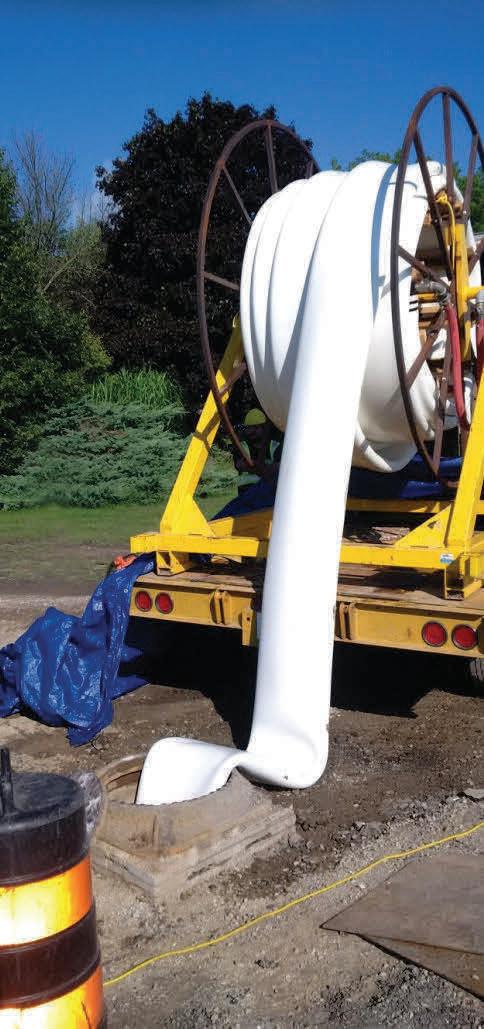
The need for a durable and cost-efficient pipe rehabilitation solution has never been more paramount. The engineers at IPEX recognized this need and have responded with NovaForm™ PVC Liner, a product that brings the lasting benefits of factory-made PVC pipe to the North American trenchless pipe rehabilitation industry.


Disruptions Available in Sizes 6” to 30”
To learn more, call or visit us at:
|
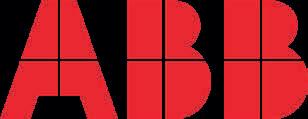
With their modular design, intelligent diagnostics and full approvals, our AWT420 advanced water transmitters offer a flexible, high performance solution for a wide range of industrial applications, from water and wastewater through to chemical and petrochemical. Packed with a host of features including Bluetooth® connectivity, dual PID control and EZ-Link™ sensor connection, water analysis has never been easier. abb.com/wateranalysis


Measurement made easy.

The versatile solution that works the way you want it to work.
Editor and Publisher STEVE DAVEY steve@esemag.com
Managing Editor PETER DAVEY peter@esemag.com
Sales Director PENNY DAVEY penny@esemag.com
Sales Representative DENISE SIMPSON denise@esemag.com
Accounting SANDRA DAVEY sandra@esemag.com

Design & Production MIGUEL AGAWIN miguel@esemag.com
Circulation BRIAN GILLETT ese@mysubscription.ca
TECHNICAL ADVISORY BOARD
Archis Ambulkar, OCT Water Quality Academy
Gary Burrows, City of London
Patrick Coleman, Stantec
Bill De Angelis, Metrolinx
Mohammed Elenany, Urban Systems
William Fernandes, City of Toronto
Marie Meunier, John Meunier Inc., Québec
Tony Petrucci, Black & Veatch
Environmental Science & Engineering is a bi‑monthly business publication of Environmental Science & Engineering Publications Inc. An all Canadian publication, ES&E provides authoritative editorial coverage of Canada’s municipal and industrial environmental control systems and drinking water treatment and distribution.
Readers include consulting engineers, industrial plant managers and engineers, key municipal, provincial and federal environmental officials, water and wastewater plant operators and contractors. Information contained in ES&E has been compiled from sources believed to be correct. ES&E cannot be responsible for the accuracy of articles or other editorial matter. Articles in this magazine are intended to provide information rather than give legal or other professional advice.
Canadian Publications Mail Sales
Second Class Mail
Product Agreement No. 40065446
Registration No. 7750
Subscription Changes?
Please email reader subscription changes to ese@mysubscription.ca, or call 705-502-0024
Advertising Penny Davey Sales Director 416 807 3812, penny@esemag.com
6
Denise Simpson Sales Representative 905 960 4064 denise@esemag.com
Environmental Science & Engineering

220 Industrial Pkwy. S., Unit 30 Aurora, Ontario L4G 3V6 Tel: (905)727 4666 www.esemag.com
57
www.esemag.com
37 UBC explores hydrothermal liquefaction to extract phosphorus from wastewater

38 Taking a closer look at the material of water system valve seats
40 Simplify wastewater DO monitoring with flexible, low-maintenance sensors
42 Post-flood, source water risk review and water system recovery plan for Merritt, B.C.
44 Water infrastructure upgrades funded for B.C. and N.B.
45 Nova Scotia flash floods damage water infrastructure
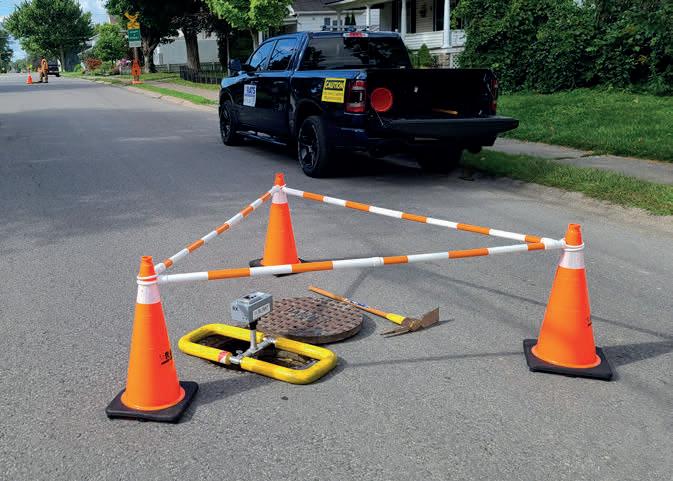
46 Dealing with diapers – the dirty little secret of organics diversion
48 What makes butterfly valves unique?
50 Stopping PFAS migration at the source to protect water supplies and prevent exposure

52 Cover Story: Canadian Arctic water system innovations for freeze protection
56 BC sets new controls for LNG sector to cut emissions, fast-track clean energy projects
60 Reports question financial feasibility of municipal PFAS removal at WWTPs
62 Laval releases ambitious $276M climate plan to cut GHGs by 33%






a co mple te range of ma rket ve pro du cts. Let u s sh ow you
Cleaning, DO Control, AlphaMeter Mixers – Anoxic & Swing Zones, Sludge Holding, Digester; Mechanical, Hydraulic and Gas Bubble

Tank Components – Covers, Fabric Ba es, Troughs, Weirs, Scum Ba es, Skimmers, Decanters, Swivel Joints, Telescoping Valves, Density Current Ba es, Launder Covers, Watertight Doors

•
tiary Filters – Travelling Bridge, Disk, Membrane
• Sludge Thickening & Dewatering –Disk Thickener, Gravity Thickener, Filter Press, Screw Press, Centrifuge

• Anaerobic Digesters – Sludge Conditioning, In-line Screening, Degritting, Membrane Gas Holders, Liquid Mixing, Nutrient Recovery
• Sludge Drying – Belt, Fluid Bed and Solar
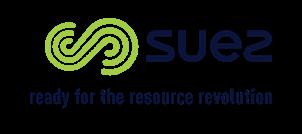
• Septage Receiving – Screens, Dump Stations, Truck Access & ID, data gathering & equipment control
• Sludge Treatment, Transport & Storage – Cake Pumps, Silos, Sliding Frames, Live Bottom Hoppers, Push Floors, Truck Loading, Alkaline Stabilization
• Odour Control – Tank Covers, Chemical & Biological Treatment, Activated Carbon
• – snoitatS pmuP & retawmrotS ,OSC
Primary & Secondary, Circular, Chain & Flight, Inclined Plate Settlers, Weir Washing
Biological – SBR, MBR, RBC, MBBR, MABR, Oxidation Ditch, BioMag, CoMag Polymer – Liquid and Dry Systems


Tipping Buckets, Bending Weirs, Flushing Gates, Flow Regulating, Vortex Valves, Storm Screens
• Digester Gas – Gas Holders, Gas Conditioning: chilling; compressing; and removal of moisture, sulphur, carbon dioxide and siloxane, complete Co-Generation facilities
In the spring of 2023, I made the most important discovery of my career (and that is saying something). Canada’s National Plumbing Code does not require trash cans in women’s toilet stalls. Our industry has been messaging for years that toilets are not trash cans, but women’s toilet stalls are not provided with trash cans! Women’s toilet stalls look exactly like men’s, except that there is a very small, metal box attached to the wall (sometimes recessed), which contains flimsy paper bags.
Presumably (and there are no instructions, by the way), we are meant to remove soiled products, get them into this flimsy bag, carry it out of the stall to the public part of the washroom, and deposit it into the trash can by the sinks.
I can tell you that I have never seen a woman carry a soiled paper bag out of the stall to do this. This is not socially acceptable, even in women’s washrooms. I have been asking women about this since my discovery, and nobody else has either.
But, I do see women cram the paper bag with soiled product back into this small metal box, right beside the stack of clean paper bags. How unsanitary. How preposterous. How disrespectful.
When the Codes were written about 75 years ago, women’s washroom requirements were not considered. Menstruating women require a sink, counter, paper towel and trash can in the toilet stall.

Rough calculations show that 51% of the population is female, about 50% of women are of menstrual age (based on the City of Toronto population distribution), and women are away from home 10 to 12 hours a day (assuming working outside the home). Then, there are evening activities like taking the kids to hockey, going to the gym, eating at restaurants, etc.
Women menstruate 25% of the time, which means millions of tons of menstrual products are being flushed every year.
We need 30% of toilet stalls to be equipped for menstruators. These can easily be combined with the accessible stall in most washrooms. They would also be helpful for women with children in diapers, adult incontinence products, etc.
Now, private businesses (restaurants, gyms, etc.) sometimes install a trash can in the stall and post a flimsy sign on 8.5 x 11 paper, made up by the owner, asking women not to flush menstrual products. Presumably, they have done this because they experience private-side sewer pipe blockages and wish to avoid them.
My question is this: why are private business owners, who know nothing about sewers, expected to educate the public? Surely this is the purview of municipalities who own and
operate sewer systems.
The National Plumbing Code needs to be rewritten (not “updated”). I observed that when gender identity issues began to be better understood, the Codes were updated to require single user toilet stalls in certain cases. These do contain all the facilities required by menstruators. It is difficult to understand why our female population has not been treated with similar respect.
Making changes to the National Plumbing Code can be a long process. The Codes are administered by the National Research Council (NRC) and updated periodically. Anyone can submit a Code Change Request to be considered every five years or so. However, for urgent needs, Code changes can be made sooner than that. I am taking steps to initiate this personally, but the rewrite needs to be done by plumbers, not engineers.
However, engineers need to understand Building Codes, as they relate to sewers. How can we solve private-side inflow and infiltration (I/I) without understanding the regulations that govern it? The Ontario Building Officials Association (OBOA) offers a course in house plumbing, which would be a great starting point
Why is this essential for the engineering industry? Most menstrual products are being flushed when women are away from home, because we have no choice. While we wait for this essential rewrite of the Code, women continue to flush menstrual products, flushable wipes, incontinence products, etc., when away from home.
These deleterious items that are flushed provide a place for continued overleaf…
When the Codes were written about 75 years ago, women’s washroom requirements were not considered. Credit: wittayayut, stock.adobe.com


fats, oils and grease (FOG) to stick, causing blockages and fatbergs. The advent of the flushable wipes industry has greatly exacerbated the formation of fatbergs, which cause blockages in laterals (private and public side), and public-side sewers. Many residents (and businesses) discharge FOG into their kitchen sinks, which also contribute to fatberg formation and blockages.
As well, when combined sewer overflow situations occur, flushed materials are discharged directly into streams, and other water bodies, and cause an unsightly and unhygienic mess in harbours, beaches and shorelines.
Obviously, these products do not belong in sanitary sewers. All of it must be removed at pumping stations and at wastewater treatment plants (WWTPs).
So, how can we educate the public about all of this? Not only that toilets are not trash cans, but that sewers are not trash conveyers. Norton Engineering has developed a simple, efficient, and cost-effective solution. We need to get trash cans in all toilet stalls, including men’s, as they also flush wipes and incontinence materials.
Public toilet stalls are a perfect place to educate and constantly reinforce the messaging, to men and women, about what to flush. Just telling them not to flush menstrual products is not enough. Why not cover all the things that should not go into sewers, such as FOG, dental
Signs like this should be
owners everywhere, to replace flimsy paper ones.

floss, condoms, etc.? We need to explain why this is important everywhere.
I have developed a stall-sized sign that is designed to cover all this information. It briefly and succinctly explains what not to discharge into sewers. It is designed to be installed in every public toilet stall (men’s and women’s) explaining this. This solution reinforces the messaging every single time someone uses a public washroom. Signs like mine should be provided to business owners everywhere, to replace flimsy paper ones.
Changing the National Plumbing

Code will not change behaviour (though equipping stalls will help a great deal). The general public understands almost nothing about sewers, even the fact that they own one if they own a house!
That is where the engineering industry can help. We are the ones who understand sewers and WWTPs, and the risks that flushed materials pose to them.

This brings me to public education. I speak very widely to generally educated, but not technical, residents. After five years of doing this, I can tell you that the public understands almost nothing about how to operate and maintain their sewer and drainage systems, including sump pumps and backwater valves. They tell me that while they have heard of what not to flush, they do not really understand the reasons why.
Many municipalities have been diligent about trying to message this. Many have sent bill inserts and have information on their website. But, based on my extensive experience with the general public, these methods have not been particularly successful.
However, I have found that if we carefully explain to residents that flushing certain materials at home increased the risk of their own sewer getting blocked, they pay careful attention.
Barbara Robinson is with Norton Engineering Inc. Email: nortonengineeringinc@gmail.com
 provided to business
provided to business
Water treatment system operators rely on the accuracy of a flow meter’s readings, particularly for chemical dosing and other low-flow processes. Accuracy in metering depends on a range of factors, from the types and quality of liquid being metered to the meters themselves.
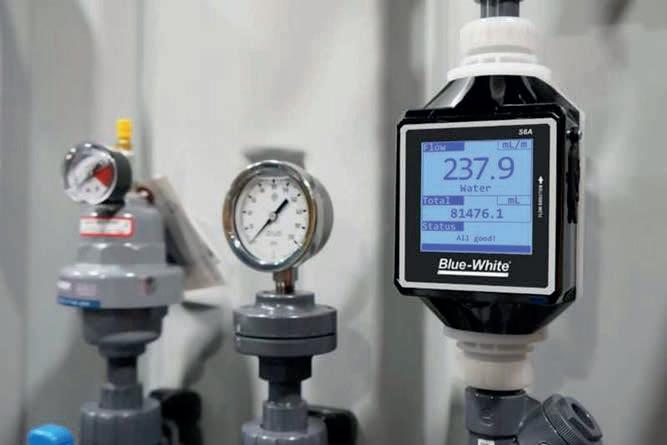
Generally, the two most accurate meter technologies are static meters (i.e., those without moving parts), which includes ultrasonic and magnetic flow meters (mag meters). Both have their advantages, but the right fit will depend on the application. This makes it important to understand the pros and cons of each technology before making a purchase.
Ultrasonic meters detect and measure flow using sound waves in one of two ways. Doppler ultrasonic meters send out a signal and measure the change in frequency as it bounces back to determine the flow rate. To do this often requires bubbles, particles or a high concentration of solids that will reflect the sound wave back.
By comparison, transit-time ultrasonic meters send two signals, one upstream and one downstream. The difference between them is proportional to the velocity of the liquid. However, bubbles and large solids will cause inaccurate readings.
Mag meters create a magnetic field and measure the voltage of any conductive material passing through the field. The major downside to this technology is that it requires liquids with specific properties or impurities. Mag meters work well with water with some natural mineral content (such as most drinking water), as well as acids and caustic liquids.
Mag meters and ultrasonic meters both have comparable accuracy under ideal conditions. The exact level of accuracy
will depend heavily on the manufacturer and the application.
As mentioned, air bubbles can either aid or hinder a meter, depending on the technology. Mag meters, for example, will read air bubbles as flow and may read high if there is too much air in the fluid. On the other hand, Doppler ultrasonics rely on air bubbles for their reading, so the opposite is true in that the absence of air can cause inaccuracies.
For transit-time ultrasonics, air bubbles can be problematic, but there are solutions, such as including a strainer that mitigates the bubbles, and installing the meter vertically rather than horizontally. This also works with substances like sodium hypochlorite, which can offgas and cause similar problems in meter accuracy to air bubbles in general.
Both types of meters are impacted by fluid temperature. The conductivity of a fluid changes with temperature, which can cause inaccuracy for mag meters, particularly at low flow rates. Similarly, ultrasonic signals will travel faster in warmer fluid than colder fluid. Thankfully, some meters have temperature sensors and built-in algorithms that allow them to compensate for temperature changes.
Mag meters require an invasive installation, which involves welding them in-line. Ultrasonics are often welded in place as
well. Clamp-on ultrasonic meters are less invasive and easier to install, although they tend to be less accurate since the pipe itself dampens the signal.
The lowest possible detectable flow rate will depend less on the technology and more on the manufacturer and the intended application. For example, meters for administered chemicals need to have very low flow ranges. Some, such as those offered by Blue-White Industries, can detect as low as 10 mL/min. This is ideal for municipal and industrial water treatment, when operators need to be as precise as possible to avoid overdosing with a given additive.
The type of liquid and its properties matter when selecting a meter. For example, mag meters will not work well with hydrocarbons, distilled water, and non-conductive solutions, as these liquids have little or no electrical charge. Ultrasonic meters will not work with a liquid that dampens sound, which includes some polymers and dense slurries.
Mag meters tend to be more expensive than ultrasonic meters, although exact prices vary depending on the manufacturer, pipe size, application, and more.
As with flow range, specific features will vary from product to product and manufacturer to manufacturer. Features like the above-mentioned strainer to reduce bubbles and temperature compensation algorithms are only available in some models.
Water treatment professionals should be sure to ask vendors about innovations that may be advantageous to the intended application before deciding.
Amparo Burke is with Blue‑White® Industries. Email: aburke@blue‑white.com
Flow meters are an important component in water treatment systems, and operators rely on their accuracy, particularly for chemical dosing and other low-flow processes.
The Northwest Inner City area of Calgary has recently experienced unprecedented flooding, the most devastating of which was the Bow River flood in 2013. This significant event refocused the city’s priorities in this area on drainage improvements. As such, in 2016, Associated Engineering updated the city’s Northwest Inner City Community Drainage Improvement Study.
Subsequently, in 2019, the City of Calgary initiated three community drainage improvement projects with three different consultants (MPE Engineering, GHD, and Associated Engineering) within the same geographic area. A year later, the city received funding through the Municipal Stimulus Program to design and construct the recommended drainage improvements. These were designed to mitigate risks to the communities, which were at the highest risk of flood recurrence.

The Municipal Stimulus Program funding stipulated that construction had to be completed by the end of 2021. To take advantage of the funding, the city had to reduce the detailed design and procurement schedule from one year to approximately six months.
To meet the tight schedule, the three consultant teams were directed to work with Associated Engineering, who would serve as lead consultant and manage the delivery of three community drainage improvement projects.
As lead consultant, Associated Engineering was responsible for aligning the designs and preparing templates to produce a single, cohesive request for proposal (RFP) for procurement of a contractor. The RFP would ultimately become the contract document, including special conditions, construction drawings, and technical specifications to deliver the overall project, while also considering and incorporating project specific elements.
The challenge was to deliver this work safely, minimizing community impacts and achieving the city’s design standards, while managing three consultant design teams, each with their own unique personality, design processes, and work environment. Viewing the projects as an overall program, defining project requirements, and considering the overlapping impacts and risks helped achieve the city’s goals.
When the provincial funding support was announced, the individual projects were already in various stages of design and construction document preparation. Adding to the program’s complexity were public safety measures related to the COVID-19 pandemic. The design teams had to transition to working remotely and using virtual communication tools and collaboration platforms for project meetings and document control. This virtual environment, project management, leadership, prompt decision making, and
clear communication helped to keep the project and development of the RFP on schedule.
The city received bids from three contractors. Employing evaluation criteria developed by Associated Engineering, it selected a contractor and awarded the construction contract for approximately four kilometres of storm system improvements valued at almost $30 million.
The project was successfully delivered in a challenging urban environment, overcoming pandemic-related supply chain constraints, and a compressed schedule. Key to the success of the project was the collaborative design and construction environment fostered between Associated Engineering, the three consultant design teams, the City of Calgary, and the contractor.
The project’s construction included approximately four kilometres of storm system improvements and was valued at almost $30 million.




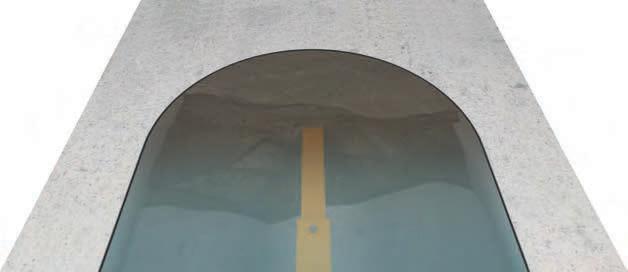
For most of the past 100 years, the predominant model for wastewater management has been the centralized wastewater treatment (CWWT) facility. In most developed economies, the benefits of such professional and effective sanitation have been enormous.
However, as our communities are embracing the need for greater sustainability, infrastructure security, and resilience, it may be time to evaluate and implement a more local alternative. This can be a distributed network of decentralized wastewater treatment (DWWT) and resource recovery facilities.
While the benefits of CWWT facilities are significant, there are inherent weaknesses. Servicing a large catchment area, they require an extensive network of large sewer lines that are costly to install and maintain, and are susceptible to increasing levels of leakage as they age.
By servicing myriad residential, commercial, institutional and industrial clients, a highly complex stream of raw sewage is discharged into an end-ofpipe treatment facility. This may make it
extremely difficult to recover resources (including water). Also, potential water reuse clients may be many kilometres from the plant.
Traditionally, CWWT facilities tend to be designed for a 25+ year horizon. This may often over-estimate or under-estimate the population growth within the community, and often places a significant financial burden on the community.

By its nature, a CWWT facility is a single point of vulnerability that could bring down all sanitation services to a large part of the community, should the operations be compromised by extreme weather events, power outages, operator error, physical or cyber terrorism, military conflict, etc.
Owing to its size and embedded cost, there is a level of inertia within the CWWT in terms of ability to evaluate and implement newer, more advanced treatment technologies beyond initial piloting activity.
DWWT refers to the practice of locat-
ing treatment equipment and processes close to points of wastewater generation. These include:
• Residential developments, including apartment buildings and small clusters of homes, up to the size of a rural village.
• Commercial and institutional facilities such as office buildings, shopping centres, schools, hotels and resorts, sports facilities, prisons, highway rest stops, etc.
• Light industrial facilities such as craft breweries and wineries, artisanal cheese producers, and similar (although these may also be described as pre-treatment operations when discharging into a municipal sewer system).
The overall vulnerability to disruptions in service from natural or man-made events would be limited to a relatively small group of clients, or mitigated completely, by shared service mechanisms. The system could also be brought back online faster with less cost or impact.
Superstorm Sandy in 2012 proved the resilience of distributed systems. The New York/New Jersey area was hit
Hotchkies, M.Eng., P.Eng.hard and flooding knocked out many of the low-lying sewage treatment systems. But, the dozens of on-site, distributed wastewater recycling systems in the region were all back up and running on generators 24 hours after the storm.
Grey and black water discharges can be treated at (or adjacent to) the point of generation for immediate reuse within or around the development for a range of non-potable applications. This significantly reduces the overall water footprint of the community.
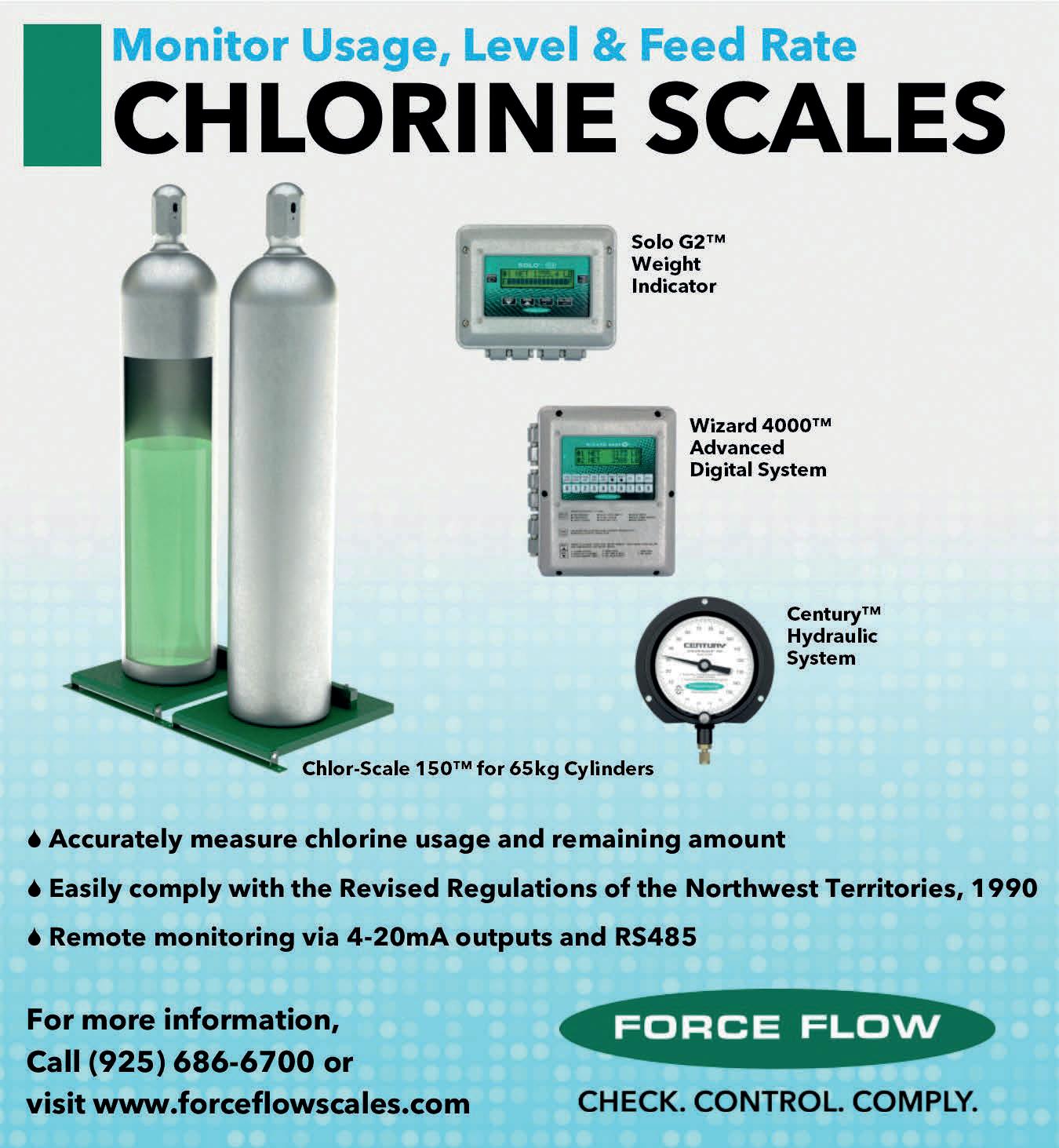
Community development can progress faster and at a lower capital outlay. Development does not have to wait until connections are made to an existing sewer line (if one exists), or until new sewer services are run to the area. Smaller, local service area facilities can be constructed quickly and at lower cost with a shorter horizon, then expanded in modular increments to match development as required. Smaller diameter and shorter sewer lines would reduce the cost of deployment and would be better tailored to actual wastewater flows to the treatment works.
Today, many DWWT systems are modular and standardized around a range of flow-based sizes, with resulting benefits including:
• Lower upfront capital expenditure, with the ability to defer downstream expansion costs until supported by revenue from development charges.
• Faster and simpler construction.
• Smaller mechanical equipment, with the possibility of sharing spares and stand-by units with neighbouring DWWT facilities.
Billions of people around the world lack access to safe and effective sanitation, let alone sewage treatment, with significant health, economic, social, and political consequences. In these areas, the rapid deployment of smaller, affordable DWWT systems offers the only viable solution to approaching the United Nation’s Strategic Development Goal (SDG) 6: “By 2030, achieve access to adequate and equitable sanitation and hygiene for all and end open defecation, paying special attention to the needs of women and girls and those in vulnerable situations.”
Balancing these potential benefits, arguments against radical decentralization have held sway for many decades. In the past, small privately-owned and operated plants have tended to be staffed with less qualified operators in some areas. Multiple small, independent plants across a community may create more complex overall control issues.
Advanced treatment technologies may be more affordable and manageable at a large, centralized facility. Some resource recovery technologies have a return-on-investment threshold that favours larger treatment facilities. Poorly designed and constructed decentralized plants can be an expensive burden to the community if abandoned by an independent operator. Significantly, an entire design community, product and service supply chain, and regulatory approvals mechanism has evolved over many decades around the large CWWT utility.
Despite these arguments, DWWT systems have recently improved, with advances in product and process technology, remote monitoring, and systems management. There is also an urgent global need to address sustainability and resilience. As such, it may be time for the water sector to look at emulating the successful migration away from the monolithic utility model that we have seen happen within the energy and communications sectors.
Today, we no longer require the technical, physical and financial mass of a CWWT facility to ensure our communities have reliable, effective and affordable sanitation. Rather, with easy access to advanced technologies from a global supply network, and by leveraging the developments in communications and inter-connectivity, we can access these benefits while enhancing our water security and resource optimization.
continued overleaf…DWWT solutions offer many potential benefits, especially for communities considering new greenfield wastewater treatment facilities, and for upgrading existing decentralized municipal treatment works to meet new loading and/ or effluent discharge criteria. Centralized utilities can extend coverage into an expanded urban or peri-urban envelope.
However, in order to extract the maximum benefit, the deployment of DWWT infrastructure should be carefully planned, coordinated and executed according to best practices.
Borrowing from the IT sector, regional utilities may consider exploring distributed decentralized wastewater treatment (D2WWT) wherein a network of DWWT facilities are owned, operated and managed by a central entity, in a hub and spoke arrangement.
This would involve common, standardized designs, construction and operating parameters, interchangeability of parts,

load sharing where interconnection with small diameter pressure lines is practical and beneficial, and centralized monitoring, operations management, and back-office services.

It is important to segregate sanitary and process (industrial) streams and only allow process streams that have been fully pretreated to typical sanitary wastewater characteristics into any community treatment works. All industrial clients would need to treat all internal wastewater streams to a quality level suitable for direct in-house reuse, and to transfer any “non-treatable” effluent to an off-site, industrial wastewater management facility.



It is also important to establish a realistic set of final effluent quality criteria to be achieved by any DWWT facility within the catchment area. For any single on-site DWWT facility or for any community network of DWWT facilities, develop a water footprint reduction strategy that maximizes on-site and/or local water reuse.
For any network of DWWT facilities where each individual site may be too small to adopt resource recovery technologies (such as phosphorus recovery), consider establishing a hub and spoke model, wherein a centralized recovery facility can be established to aggregate feed from the treatment nodes for cost-effective recovery.
Any DWWT facility external to a centrally managed network will need the following:
• A n operating system that can be continually monitored, or will send out alerts when key functional parameters are exceeded.
• On-site stock of spares for all key mechanical, instrumentation, or other process-critical equipment.



• A cloud-based log of required analytical data (as required by the system vendor), and permit criteria fully accessible by the permitting agency.
• An operations and maintenance protocol and log that reflects the base requirements of the system vendor, updated annually to reflect application, or site specific conditions.
In some cases, the advantages and benefits of the CWWT facility will continue to outweigh any other alternatives. But, for many communities and applications, advances in technologies, processes and products have now overcome many of the barriers or objections to the deployment of widespread DWWT systems.
These systems represent a viable option to address our growing concerns over water scarcity, infrastructure security and resilience, and the urgent need to provide access to safe and effective sanitation for the billions of people around the world without any infrastructure.
This article was adapted from a whitepaper written by the author entitled “Decentralized and Distributed Wastewater Management”, for the Ontario Society of Professional Engineers (OSPE). OSPE assumes no liability or responsibility regarding adaptation from the original content. References are available upon request.
VEGA’s commitment to providing the best process measurement solutions means more than just producing precise and reliable instrumentation; it means being there whenever you face a challenging measurement application. That’s why VEGA is proud to now o er direct sales and support to the Atlantic Provinces. SOME




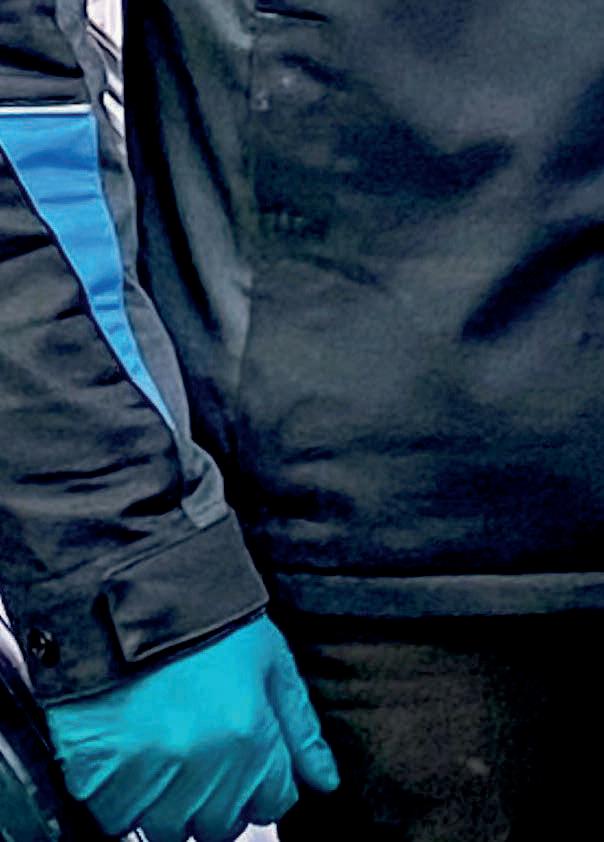









Per- and polyfluoroalkyl substances (PFAS) are a broad category of fluoropolymer, synthetic substances that are widely used in the manufacture of non-stick cookware, water-repellant textiles, stain-resistant carpets, chrome-plating, and semiconductors. Due to their strong fluorine-carbon bonds, PFAS have been repeatedly demonstrated to be pervasive and persistent environmental contaminants, aptly earning the name “forever chemicals”.
Their significance, however, is not limited only to environmental degradation but extends to their contentious effects on human health. Exposure to the hazards and toxicity of PFAS in drinking water has been a worrisome reality worldwide. As such, many methods have been used to test its presence in human biological fluids, including whole blood, blood serum, breast milk, as well as hair.
At this stage, Ontario has not yet regulated these compounds under the current site assessment structure. However, this will likely change in the coming years, given the extent to which these types of chemicals exist in the environment due to human activities. Most environmental remediation summits and conferences now touch upon how environmental professionals are planning to mitigate the effects of these chemicals on humans in the future.
Blood serum testing for PFAS has been the dominant method for quantitative analysis. However, it comes with a set of challenges. Traditionally, a larger volume of whole blood is drawn from a patient’s vein and safely transported to a laboratory, where the serum is separated. This is a time and cost-ineffective process.
The other approach is extracting and analyzing whole blood from minute dried blood spots. However, this results in a loss of accuracy, because volumes of whole blood present in these spots can vary significantly.
To overcome these challenges, Eurofins Scientific has developed a sampling approach introducing a new generation of specialized volumetric absorptive micro samplers (VAMs). These are equipped with a proprietary absorptive hydrophilic polymer that precisely measures 30 µL of whole blood extracted through a single finger prick. This design was specifically developed for the ease of self-collection, packaging and transport for quantitative analysis.
A study was performed to evaluate this novel VAMs approach against other sampling methods. It concluded that it is well suited to characterize a variety of PFAS concentrations in the blood with high accuracy.
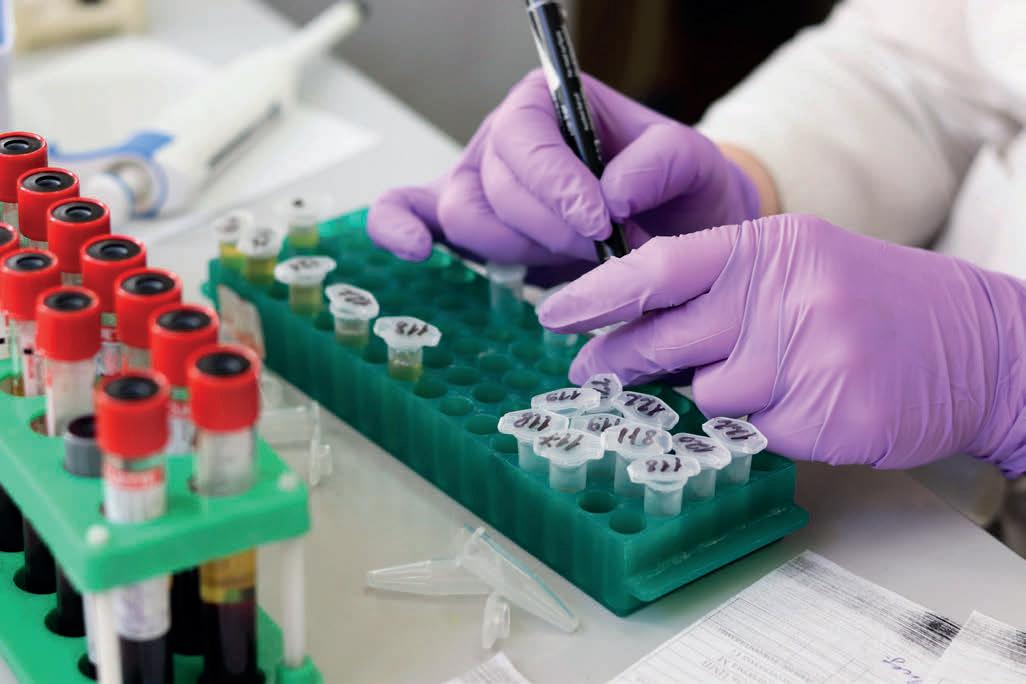
While VAMs seems like a promising sampling option for
epidemiological studies of PFAS in large-scale biomonitoring programs, or for individuals interested in knowing PFAS levels in their blood, it is uncertain as to how much of the population will endeavour to ascertain these concentrations.
It may require medical professionals to urge such tests to be routine as a part of annual physicals, etc. The reason being that it is expected that a very large swath of the human population may have significant concentrations of the subject chemicals that, if left unchecked, will impact our collective health down the road.
Beniz D’Souza is with the City of London. Email: dsouza.beniz@gmail.com. Sajjad Din is a professor at Centennial College. Email: ofotd1@gmail.com
Reference: Self-Collection Blood Test for PFASs: Comparing Volumetric Microsamplers with a Traditional Serum Approach. Courtney C. Carignan, Rachel A. Bauer, Andrew Patterson, Thep Phomsopha, Eric Redman, Heather M. Stapleton, and Christopher P. Higgins. Environmental Science & Technology 2023 57 (21), 7950-7957.
Blood serum testing for PFAS has been the dominant method for quantitative analysis. Credit: muhammad, stock.adobe.com











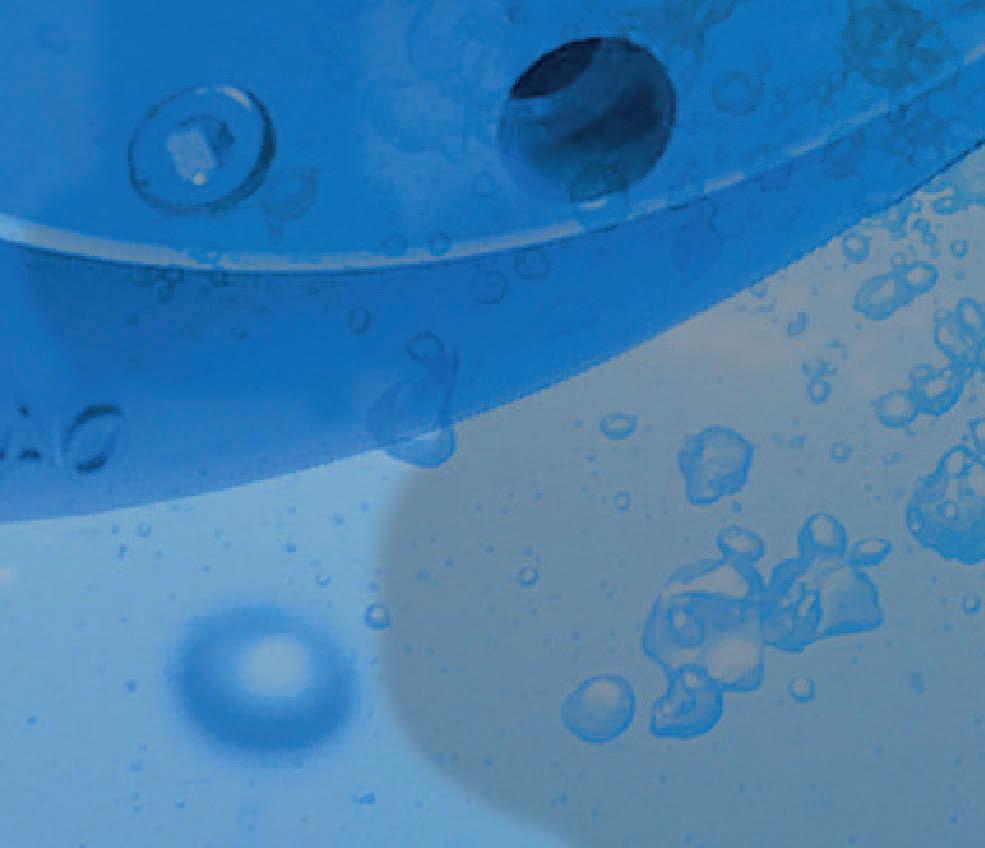
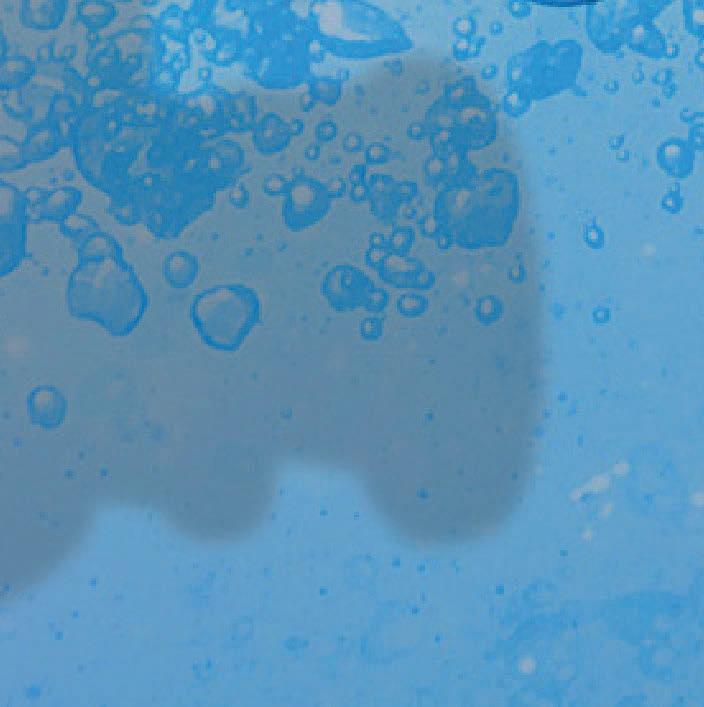



Maintaining an efficient and reliable sewer system is a critical task for any city. As urban areas grow, the capacity demands on sewer infrastructure increase. To meet these challenges, innovative technologies are being employed to streamline maintenance processes and reduce costs.
One such technology is acoustic inspection, which is a fast, low-cost, and highly effective method for assessing small-diameter gravity sewer lines. Already being used across Ontario, aggregated data suggests the device has helped utilities cut costs while increasing inspection efficiency.
The Sewer Line Rapid Assessment Tool, or SL-RAT®, by InfoSense Inc., is comprised of a transmitter and a receiver. The transmitter is placed atop an open manhole and emits a series of tones. These acoustic waves travel into the airspace within the sewer pipe. Positioned on the adjacent manhole, the receiver listens for these known tones and assigns a score to the pipe segment based on how much sound it transmits.
Scores range from 0 to 10, with 0 indicating a completely obstructed pipe and 10 representing a pipe with excess flow capacity. By utilizing acoustic inspection, cities can shift from traditional reactive or time-based maintenance strategies to a more efficient, condition-based approach.
Instead of allocating resources evenly or waiting for a
problem to arise, this method first determines general blockage locations and then focuses cleaning efforts on pipes that require immediate attention. As a result, this proactive strategy allows for targeted maintenance, lowering costs while reducing risk in one’s system.
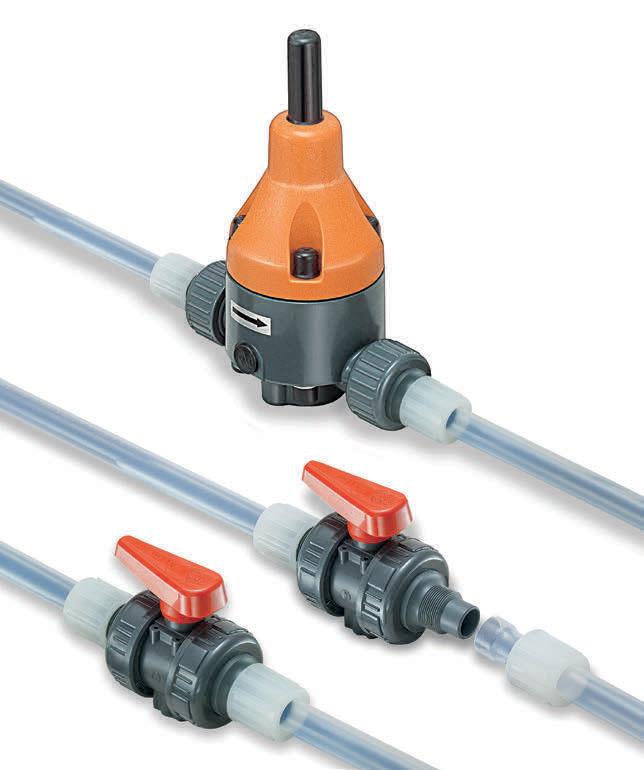
Since 2017, nine cities in Ontario have adopted acoustic inspection as a condition-based maintenance strategy. These cities have collectively measured over 3,500 kilometres of gravity sewer lines using the SL-RAT.


Looking at over 52,000 measurements taken during the sixyear period, the data shows a large majority of each city’s collection system is unobstructed. Over 75% of all the lines measured were scored as “good” by the SL-RAT. Pipes receiving this rating have excess flow capacity and require no further maintenance.
By identifying these unblocked pipe segments, attention and resources can be redirected toward addressing lines that
A RATS team can inspect a larger portion of a system in a shorter amount of time compared to other methods.the SL-RAT scored low. In the case of Ontario, less than 10% of lines scored below a 4. This totals around 275 kilometres between all nine cities.

With a cost of cleaning ranging from $3.00 to $5.00 per metre, the total cleaning cost for every blocked line can be estimated between $825,000 to $1,375,000. Comparatively, it would cost between $10,000,000 to $17,000,000 to clean all 3,500 kilometres measured with the SL-RAT.




The data also shows increased efficiency. On average, the nine cities could measure 750 metres per hour. As InfoSense CEO, Alex Churchill, puts it: “One key benefit of SL-RAT is an increased inspection scale. You are only going to find problems where you are looking.”
Since SL-RAT measurements take less than three minutes without flow contact, a two-person SL-RAT team can inspect a larger portion of their system in a shorter amount of time compared to more traditional inspection methods.

The efficacy of the acoustic inspection device has not been limited to Ontario alone. Hundreds of communities worldwide have embraced this technology. By










By identifying unblocked pipe segments, attention and resources can be redirected toward addressing lines that the SL-RAT scored low. In the case of Ontario, less than 10% of lines measured scored below a 4.
employing it, cities can make informed maintenance decisions, maximize their resources, and ensure the longevity and efficiency of their vital sewer systems. As technology continues to evolve, acoustic inspection paves the way for more sustainable and resilient infrastructure management.
Chase Mendell is with InfoSense Inc., who are represented in Canada by Rapid Assessment Technology Services (RATS) Inc. For more information, email: sales@ratsinc.ca





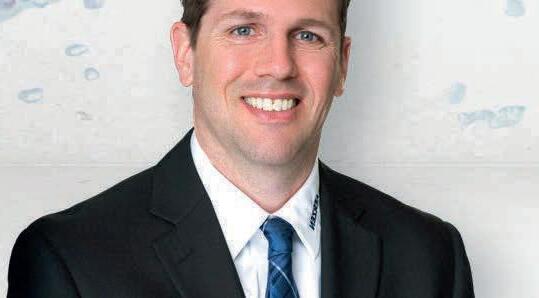
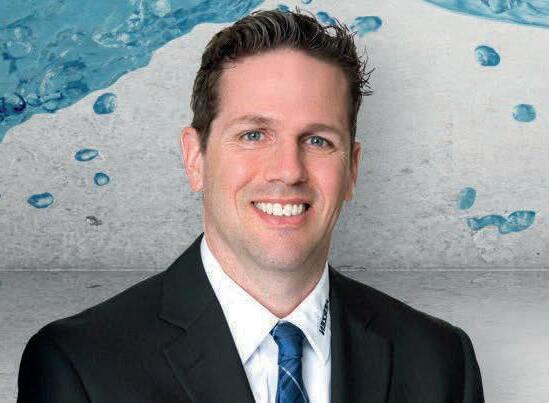









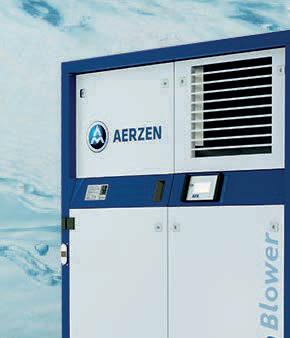

 By ES&E Staff
By ES&E Staff



Aformer Smiths Falls water treatment plant with two heritage designations was severely damaged in a May fire. Now, local officials of the eastern Ontario town are weighing demolition versus stabilization, which both have a “similar order of magnitude,” according to an engineering report.

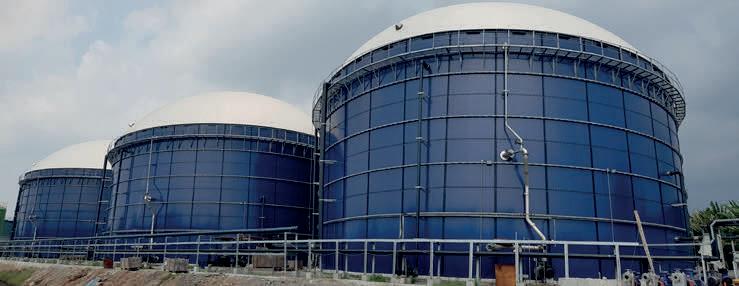
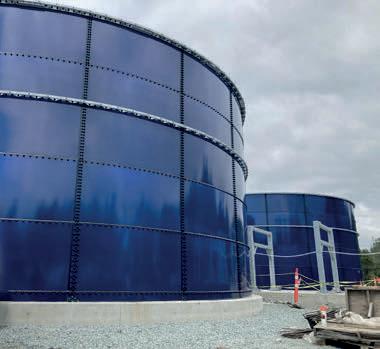
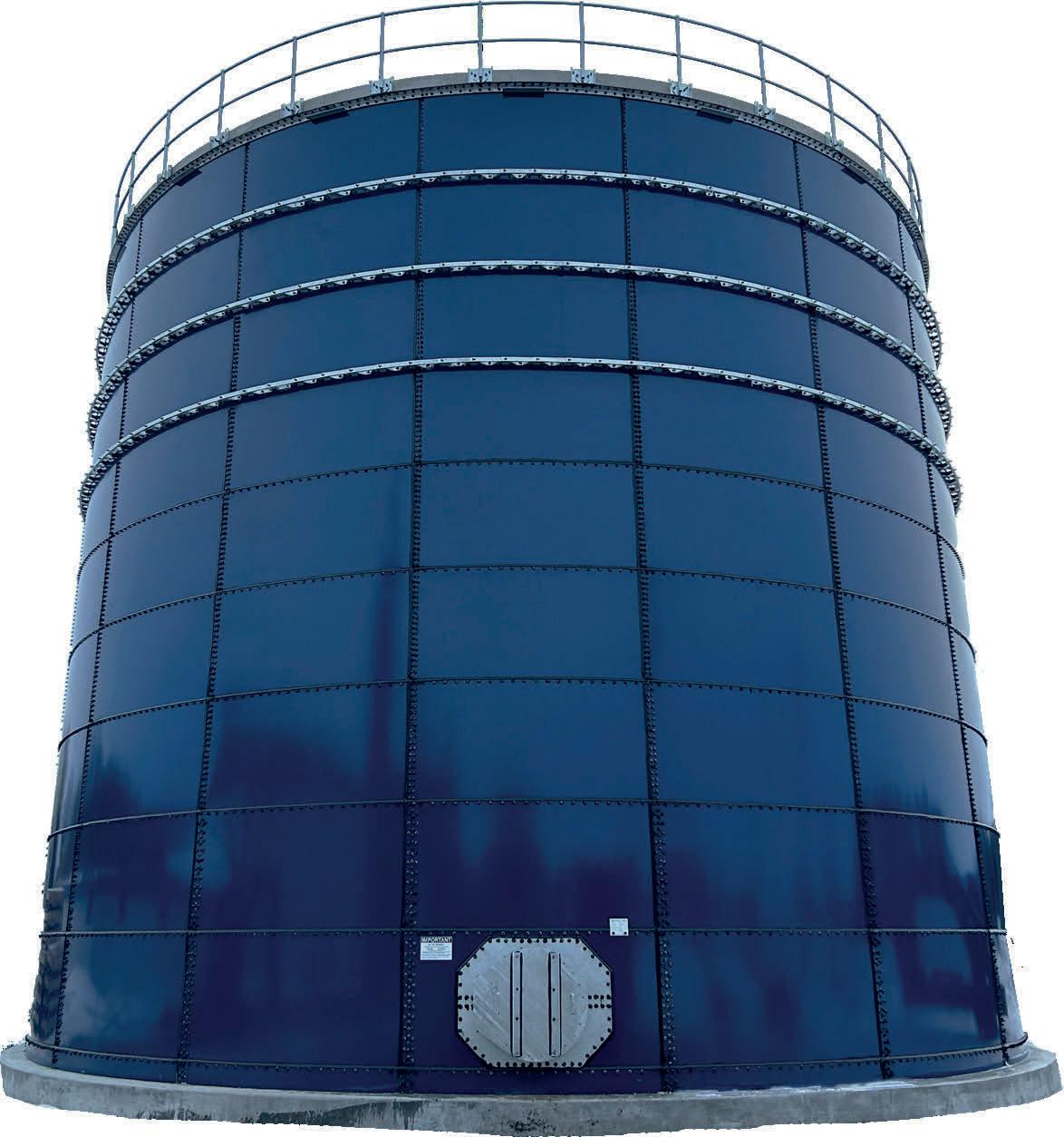
G. Douglas Vallee Limited presented its structural pathology engineering report to the Smiths Falls council in late July. It estimates that the ballpark figure of $500,000 would be a reasonable starting figure for either razing the property or stabilizing it and restoring damaged masonry walls.
The three-storey sandstone building along the Rideau Canal dates back to 1868 when it was built as a grist mill. The town
purchased it in 1910 as a waterworks and made several additions. Ultimately, it was decommissioned in 2010 after providing drinking water for more than a century. The Smiths Falls Waterworks Building Complex was designated as a heritage property in 1977 for its historic and architectural value.
“The option to stabilize and restore the masonry improves the safety of the site while protecting the heritage integrity of the buildings,” states the engineering report. “This option is similar (same order of magnitude) yet understandably more expensive than demolition. If there is a foreseeable vision for the future development of this site and the will to preserve the historic structure, this option is feasible and economically responsible in the long term if the heritage value of the site is considered.”
Leaving the Smiths Falls structures as is was not recommended as a course of action, primarily considering that the report states that there are “environmental events that could cause partial collapse of the stone masonry wall.”
Redevelopment plans for the historic building had been well underway prior to the spring 2023 fire, the cause of which remains unknown. Plans that had been in the works include maintaining the historic elements of the architecture while converting the site into a wedding and meeting venue, as well as condominiums, with construction starting as soon as 2026.
The Smiths Falls municipal heritage committee has expressed a desire to preserve what is left of the site after the fire.

Local officials had previously commissioned a separate engineering report that had recommended “immediate demolition,” but decided to seek out a second opinion before tearing down the site.
For more information, email: editor@esemag.com
 The Smiths Falls Waterworks Building Complex was designated as a heritage property in 1977 for its historic and architectural value.
Credit: G. Douglas Vallee Limited
The Smiths Falls Waterworks Building Complex was designated as a heritage property in 1977 for its historic and architectural value.
Credit: G. Douglas Vallee Limited


Equipped with superb sealing capabilities and built to meet the rigorous MSS-SP-81, AWWA C520-10, and TAPPI-TIS 405-8 standards, the Pratt® Knife Gate Valve is the ultimate solution for a range of applications in industries, including mining, chemical, food/beverage, and pulp and paper.

Specifically engineered to handle tough slurries and abrasive materials with ease.360 degree wrap-around packing with first row elastomer seal Gate reinforced by a PTFE bearing incorporated into the seat Seat loads into the body through the packing chamber VISIT
Heat regeneration (or heat recovery) is the mechanism whereby heat from a process, which would otherwise be lost or wasted, is recaptured and used for useful heating purposes. Heat regeneration should not be confused with “regenerative heat exchangers”. These are a specific type of heat exchanger in which the product and service fluids flow alternately, and the heat is stored in the structure of the heat exchanger.
When we talk about heat regeneration, we mean the recovery of as much surplus heat (or cooling capacity) as possible after the primary function of the heat exchanger has been performed. This can then be reused to either improve the efficiency of the heat exchange process or used elsewhere. Recovery and reuse of industrial waste heat is an attractive concept that could simultaneously reduce energy costs and CO2 emissions.
Given the importance of energy efficiency in reducing the use of fossil fuels and greenhouse gas (GHG) emissions, it can be argued that it is imperative to employ heat regeneration and recovery at every opportunity. As at least one research paper has pointed out, the use of excess heat could also be important to improve the economic and climate footprint feasibility of new processes, by avoiding the addition of new heat production capacity.
Heat recovery improves the energy efficiency of heat exchange processes, so the greatest benefit of heat regeneration (recovery) is that less energy is required for a particular heating or cooling operation. This obviously provides financial benefits, but is also better for the environment compared to systems without heat recovery.
Repurposing recovered heat can also reduce the amount required for certain processes. For example, if a material is
pre-heated with recovered heat, then it may be possible to complete the necessary heating (for example, pasteurization) using hot water from another source or part of the factory. This is instead of requiring a dedicated boiler to provide the necessary temperature rise.
By increasing the energy efficiency of the heat transfer process, heat recovery can also make it possible to reduce the size of the heat exchange equipment required, or reduce the necessary processing time.

One example can be found in food processes, where products such as cream need to be heated to the necessary temperature to achieve pasteurization, then rapidly cooled to maintain shelf life and quality. Such systems involve the use of
two heat exchangers. One uses hot water to raise the temperature, while the second uses chilled water to cool the cream down again.
The cooling process produces warm water which can be discarded, cooled for reuse, or cooled with some of the heat contained being used to pre-heat the cream before the pasteurization process. This last option utilizes heat recovery or heat regeneration, reducing the amount of new energy required for the subsequent first heating phases.
As another example, many biogas plants use heat exchangers to pasteurize the digestate produced during the anaerobic digestion (AD) process. The “surplus” heat which is generated after the system has been running can also be used to pre-heat the digestate, reducing total heat load and improving overall efficiency.
Water which has been heated by cooling food products can be used to pre-heat the same product ahead of pasteurization, reducing the overall energy requirement.Heat recovery can also be used in gaseous applications. Whether it is using the heat from the flue gas of a biogas combined heat and power (CHP) engine to pre-heat digestate, or a large gas-togas heat exchanger to capture waste heat from chemical processing, there is no reason to waste the heat present in gaseous products or waste streams.
Perhaps the most common use of heat regeneration is demonstrated in multi-effect evaporation systems, where several heat exchangers are combined. In HRS’s DCS digestate concentration system, the first evaporation stage heats liquid digestate and uses a cyclone separator. Steam produced from this first cycle is then used as the heating media for the second effect, whereby the process is repeated. The subsequent steam is then used as the heating media for the third cycle.
The number of effects is determined by the level of dry solids required and the amount of surplus heat available, up to a maximum of four cycles. After the final stage, the steam is condensed back to water and this heat is used to pre-heat the incoming product before the first stage of evaporation. In all, the heat is regenerated up to four times in the process.
To determine the potential value of waste heat, and what it can be used for, it is necessary to know the process temperature, the product and heating (or cooling) medium being used, and the performance of the heat exchange process in terms of heat transfer area and flow rate.
It is therefore important to consider energy regeneration or recovery as early as possible. Heat recovery systems can be retrofitted to many processes, but their design is often a compromise. As such, retrofitted solutions may involve excessive pipework and other connections.
To maximize the benefits of heat regeneration, it is important that waste heat is transferred to the storage media (e.g., water or thermal transfer fluid such as glycol) as soon as possible after its source. This is particularly true where waste heat is in the form of a gas. It has a much greater energy constant than liquid, meaning that the heat is lost much faster. By considering all these factors, it
will be possible to calculate both the additional capital costs associated with specifying heat regeneration in a project, together with the savings in running costs and energy. Then, the return on investment for the project can be calculated. Although capital costs may be higher, the longer term financial and environmental benefits will make
the use of heat regeneration in heat exchanger projects highly attractive.

Matt Hale is with HRS Heat Exchangers. Email: info@us.hrs he.com



We understand the challenge of finding the right balance between plant efficiency and compliance with industry standards and legal requirements.

Hamilton became a city in 1846 and was the second one in Canada to create its own water system. Up until 1955, lead water services were used in plumbing, and lead was the standard material used in soldering up until the 1990s. When the health risks associated with lead became known, the city anticipated that this would be an issue with so many old homes and old infrastructure.
Nick Winters, director of Hamilton Water, said: “Lead plumbing material is an issue for the City of Hamilton, our residents, and our industrial, institutional and commercial customers as well. So, we knew it would take multiple approaches to identify the extent of the problem and different tactics to mitigate the effects of lead as quickly as possible.”
The city has 154,352 water service lines and about 20,000 homes built before 1955 that may have a lead water service line connecting them to the municipal water supply. Determining the extent of the issue involved identification of lead plumbing, sampling, education, and if necessary, replacement. As this cost is the homeowner’s responsibility, service line replacement can be challenging for some residents.
The city conducted a lead sampling program that confirmed that more than 10% of the lead samples taken from residential plumbing systems with water service lines exceeded 10 micrograms of lead per litre (μg/L). The maximum acceptable concentration (MAC) for lead set by Ontario Regulation 169/03 is 10 micrograms per litre. In 2019, the acceptable level set by Health Canada was lowered from 10 micrograms per litre to 5 micrograms per litre.
While there are no lead watermains in the city, there are lead service lines on public property that need to be identified and should be replaced. Dealing with both residential and municipal identification and replacement would take years, even though the city was committed to starting work right away.
“We recognized that we needed an interim solution that would have a more immediate effect while the replacement program was underway, and this led to the implementation of a corrosion control program (CCP),” said Winters.
In November 2018, the city started adding a phosphate-based inhibitor in the Woodward Avenue Drinking Water Sub System (DWSS), where lead sampling results exceeded the MAC by Ontario Regulation 169/03. Orthophosphate creates a protective barrier inside pipes, which reduces the release of metals such as lead and copper from household plumbing. Phosphorus is an essential nutrient and an approved safe additive to drinking water. The estimated average requirement of phosphorus for adults is 580 mg per day. The city’s addition of orthophosphate amounts to an increase of no more than 1 mg/L.
The city spent $987,000 on the design, and $6.2 million on the construction of the orthophosphate addition building at the Woodward Water Treatment Facility. The ongoing cost of maintaining the CCP is about $311,000 per year.
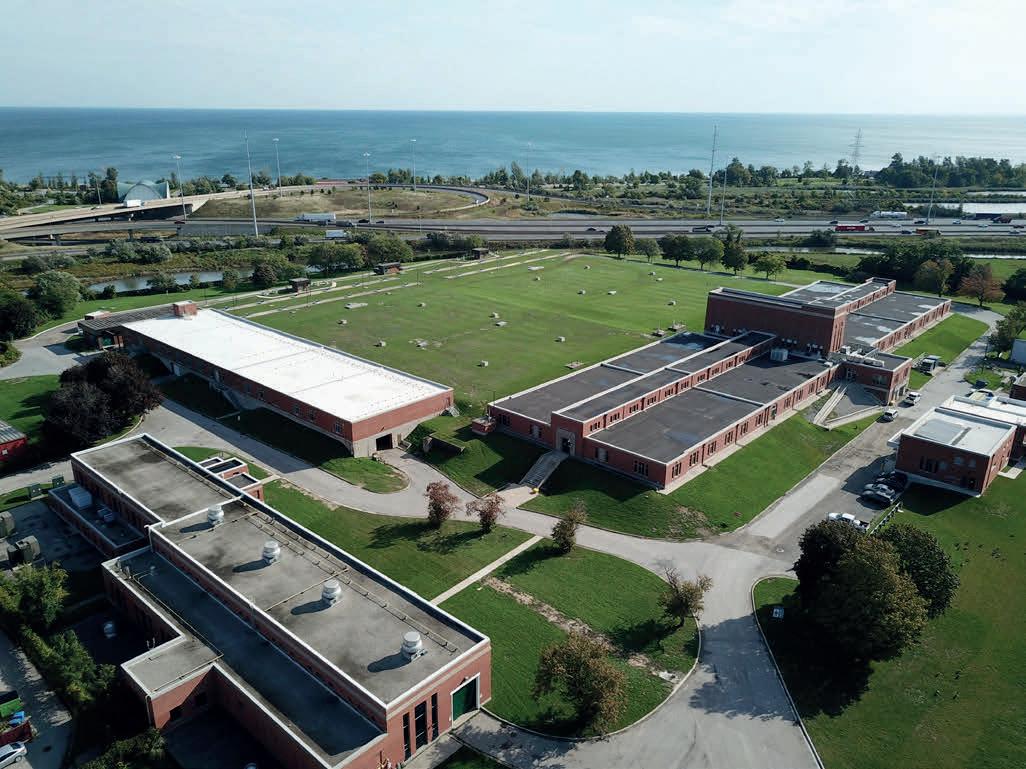
To monitor the effectiveness of the program the city did pre-implementation sampling, so they had a baseline, and then post-implementation sampling to monitor the effectiveness of the lead control.
The city installed three lead pipe loops in the Woodward Avenue DWSS as an additional tool to monitor the effectiveness of the corrosion control. Monthly lead samples showed an overall decreasing trend. Post implementation, the lead values at all three locations were below the Health Canada limit of 5 µg/L.
Winters said: “We expect the lead levels will continue to decrease as the scale thickens and strengthens from continued exposure to orthophosphate. The CCP results have been very effective in a short period of time. It is an important program as it helps protect residents who can’t afford to replace the private-owned portion of their lead pipe, and those properties that don’t have lead supply pipes but still have leaded-brass fixtures and lead solder in their internal plumbing.”
Secondary impacts stemming from the addition of orthophosphate were also observed in the distribution system. Although pre-filter orthophosphate dosing has contributed significantly toward reducing treated water aluminum levels, precipitation of orthophosphate with aluminum was observed within the distribution system. This impact was controlled through flushing and
Use PROMO CODE “ESE15” to get 15% OFF registration fees! Learn more and register today: www.canect.net


November 14 – 15, 2023 Vaughan, ON and Virtually


The Fall CANECT Essentials Conference features practical and interactive courses, led by experts in environmental regulations, best practices and due diligence.
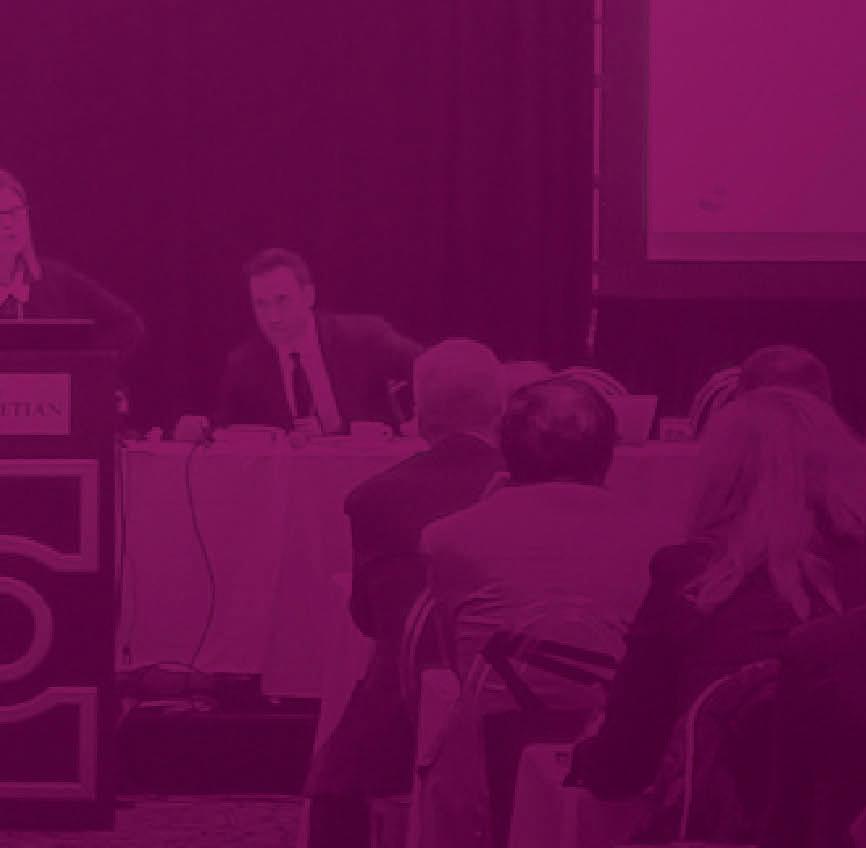
Always on the cutting edge of new regulations and policies, CANECT’s courses are consistently being updated and renewed with fresh content every six months to ensure that only the most up-to-date information is delivered.



Constant re-evaluation by the editors and staff at Environmental Science & Engineering Magazine and CANECT session chairs ensures that our

faculty of expert speakers, the topics they present, and the handout materials they develop reflect the highest standards of relevance and practical application.


That’s why CANECT’s courses continue to be the #1 choice of both experienced environmental practitioners, speakers, partners and sponsors, as well as those new to the field.

did not contribute to aesthetic impairment noticeable to customers.
The city estimated that there was a total of 20,000 substandard/lead water service lines (LWSLs) within the Woodward Avenue DWSS at the end of 2021. It has had a sub-standard water service line replacement program for over 30 years to address customer requests related to pressure or other concerns (such as undersized services or leaks). Over the last 10 to 15 years, as the awareness of health risks associated with lead became apparent, the focus of the program shifted from poor pressure to sub-standard/LWSL replacements.
In this program, the city replaces the sub-standard material up to the property line (public portion), when the homeowner replaces the privately-owned portion.
“There are potential health impacts that can result from mixed plumbing types, and also the possibility that a new 25-mm public water service line can cause
increased flow and pressure on a private service line. As such, we are opposed to replacing the public water service line prior to the private water service line replacement. From 2017 to October 2022, we have replaced over 4,589 sub-standard service lines,” said Winters.


The first step for residents was to understand the health risks associated with lead and what they can do about it. The city completed a 29,498 mailout to all homes built before 1955, or that had a known lead service line, or an unknown service type. In true transparency and to reach every resident, the city also inserted lead awareness pamphlets into all billing statements and their newsletter and launched an advertising campaign. To help homeowners determine if they have lead pipes, the city made an informative identification video. Residents are also able to call the city and book a free inspection.
All this information is available on the lead awareness website (www.hamilton.ca/
leadpipes) and the corrosion control website (www.hamilton.ca/corrosioncontrol).
“Our goal was to ensure every resident knew about the risk associated with lead and were aware of what we were already doing, but more importantly what we still need to do together to protect all residents,” said Winters.
On August 11, 2022, a change was made to amend Hamilton’s Property Standards By-Law, backed by a staff recommendation, that obligates Hamilton homeowners to switch out their portion of lead water service line to match the city’s current standards.
Winters said: “In order for us to eliminate all the lead service lines in Hamilton, we need the remaining homes to have their lead pipes replaced. This new by-law will help us achieve this goal in protecting all our residents. While we can’t cover the costs of upgrading private infrastructure, we have provided a loan program to
make it more affordable for homeowners.”
The city offers a $2,500 interest-bearing loan for property owners who would like to replace their lead water line. To make it easy, the loan, including interest, is transferred to the owner’s monthly water bill for a maximum 10 year repayment period. In addition, homeowners who have qualified for low-income energy customer support programs such as LEAP (low-income energy assistance program) or OESP (Ontario electricity support program) are eligible for a zero-interest loan to cover the cost of the replacement. The loan remains interest-free unless the customer defaults on payments.
Roughly 175 to 200 loans are issued every year to homeowners to replace their lead lines.
The city also has a program that provides tap filters approved for lead removal by the National Sanitation Foundation (NSF/ANSI53). These filters are provided to any residents that have a lead line
and after each private water service line upgrade. This allows the resident to minimize any impacts resulting from mixed plumbing types until the public portion is replaced.
Currently the public water service lines are being replaced approximately four to eight weeks after the private side is completed due to backlog. When the program started in 2017, 221 lead filter kits were handed out, since then more than 125 kits have been provided to residents by the city. In 2020, the city amended the program to provide a jug and three filters to homeowners when a lead filter kit is requested.
The cost of the lead program to the city is approximately $3.5 million dollars a year, which includes water service line replacements, education, sampling, testing and pilot testing.
The corrosion control plan results are extremely good and pipe replacement is accelerating. “Initially we expected

it might take 30 to 40 years to find and replace all the lead lines in the city. But, with the public on our side and over $1.38 million already committed in our loan program, we have effectively reduced this time frame by 10 years, since we started in 2017. We also had to manage the pandemic during this time, so we are optimistic that reducing this time frame further is still possible,” concluded Winters.
Hamilton’s water is tested over 46,000 times a year to ensure residents can trust that is safe to drink and that the city is continuing to be proactive to keep it this way.
Susan Girt and Dave Alberton are with Hamilton Water. For more information, email: susan.girt@hamilton.ca, or dave.alberton@hamilton.ca

In addition to physical and biological treatment, wastewater treatment requires aggressive usage of large amounts of chemicals, so safe storage of them is always an important consideration.
To facilitate the removal of solid particles within wastewater, chemicals such as ferric chloride, polymers and alums are used to produce positive charges. These are intended to neutralize negatively charged solid particles. As a result, the solid particles clump together, making removal easier. Since more solids exist in wastewater than municipal drinking water, more chemicals are required for this coagulation process.
Neutralization, or the adjustment of the pH levels of wastewater with the addition of an acid or a base, is common in wastewater treatment. Either sulfuric acid or another base chemical (typically sodium hydroxide) may be added to the water to achieve optimal pH balance.
The collection and treatment of industrial wastewater can result in some unpleasant odours. Chemical treatment is used to control them, in addition to activated carbon and wet scrubbers. It is very common to see sodium hydroxide, calcium nitrate and hydrochloric acid used in these processes.
To prevent the spread of disease, microorganisms that are pathogens must be destroyed or removed from wastewater. A common, relatively safe, and inexpensive disinfecting chemical is sodium hypochlorite.
Finally, a polymer chemical is typically used to remove water from sludge to reduce volume, making transporting the sludge to the landfill easier and less expensive.
is built should start with the chemical involved. Thoroughly understanding the nuances of the chemical’s properties is vital to maximize the operation and performance of the chemical delivery system, as well as the longevity of the chemical storage tank.
The storage tank is the headworks of the system, so it is a critical component of the overall process involving the use of the chemical. If the design of the storage tank is wrong, it could lead to serious problems. If you simply design a tank based on generic factors such as size, material and capacity without defining the chemical used, you risk getting a non-optimal tank.
and flow meters—all essential parts for proper operation—could potentially be compromised.
Sodium hypochlorite is one of the most common chemicals used to eliminate bacteria and viruses, especially towards the end of the process, in the disinfection stage.

It presents several major chemical storage challenges, including breakdown under UV light exposure; the fact that it tends to contain transition metals such as nickel, iron and copper that accumulate in the tank and create off-gassing exposure; and that it aggressively oxidizes.
Since sodium hypochlorite is an aggressive oxidizer, the opportunity for it to escape the storage tank must be lim-
Every chemical storage system that continued overleaf…
Also, it is important to consider the effect that chemical properties have on the other component parts of the storage system. Valves, fittings, pumps
If you simply design a tank based on generic factors such as size, material and capacity without defining the chemical used within the tank, you risk getting a non-optimal tank.




























Sewage sludge dewatering offers a wide range of potential savings for operators of wastewater treatment plants. The cost of transport and disposal of dewatered solids can amount to as much as 80% of the operating costs of mechanical dewatering. Since dryer solids result in less volume for disposal, the decision to invest in an efficient, reliable and, above all, peakperforming dewatering system is critically important to reducing operating costs.
“The Flottweg centrifuges and the dryer biosolids they produce have saved us about $900,000 annually. Our plant was able to incinerate the dryer sludge without the aid of natural gas, which equated to our high savings. The Flottweg centrifuges also produce cleaner and more consistent centrate.”
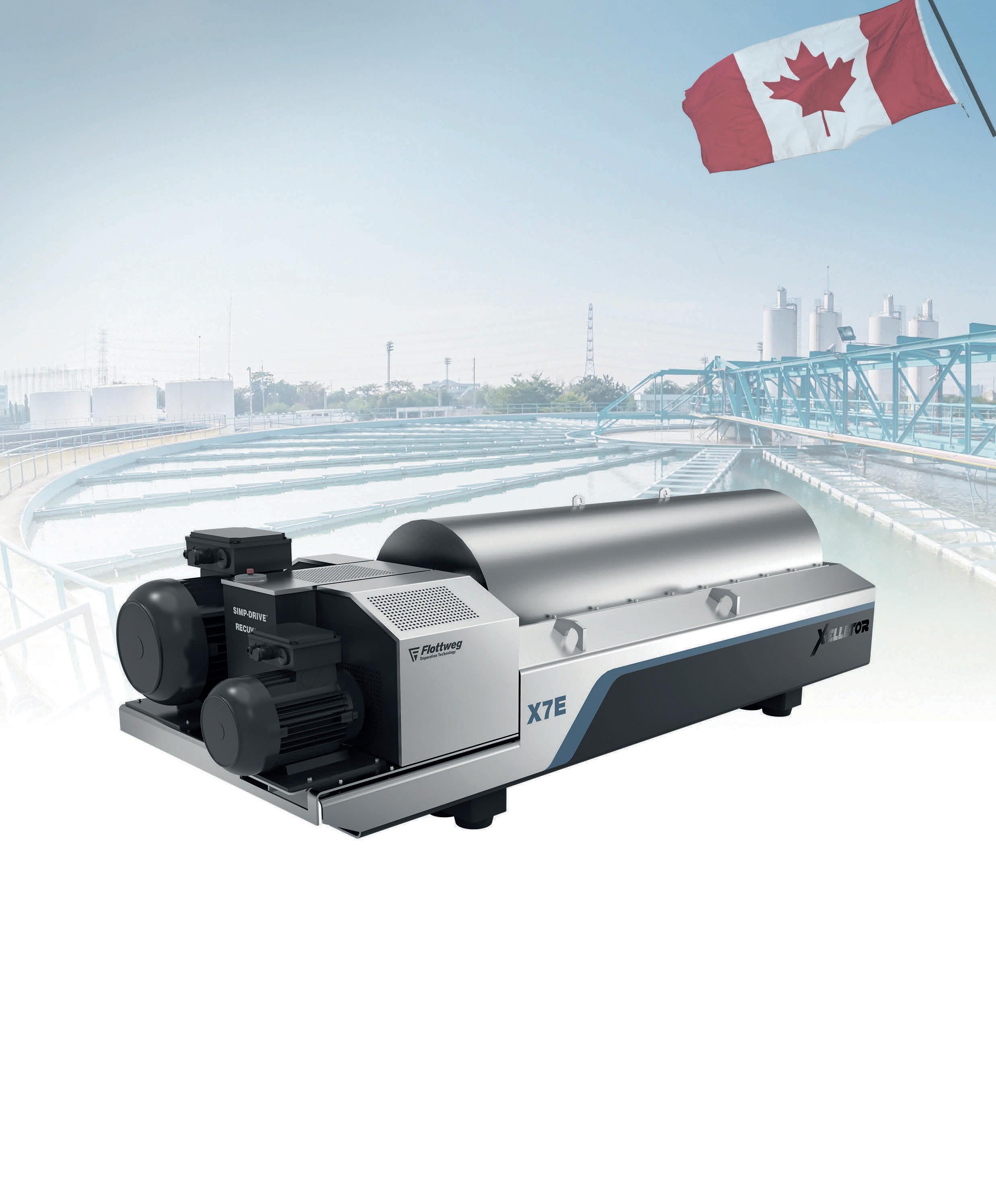
ited through wetted connections and side fittings. This will reduce leak paths that can cause damage. In addition to oxidation, sodium hypochlorite is sensitive to transition metals found in some common tank fittings. These will quickly degrade the chemical, while causing off-gassing and even more aggressive oxidation.
One key to storing sodium hypochlorite is to use carbon black, white, or gray compound cross-linked polyethylene (XLPE) resin to dramatically reduce UV degradation of the chemical, as well as mastic coatings and insulation. XLPE is excellent for strength and chemical compatibility, and using an antioxidant inner resin prevents oxidation. This combination seamlessly bonds the engineered interior antioxidation resin with a maximum strength outer surface.
To prevent the potential buildup of transition metals in the tank, a molded, full discharge fitting like the Poly Processing IMFO® system must be used. This special, integrated flange is molded into the tank, preventing chemical con-
tact with any surfaces other than polyethylene. It also allows for full discharge/ drainage of the tank, which can greatly increase the half-life of the chemical. Any additional fittings should be PVC.
Any gaskets should be made of EDPM or Viton GF to meet NSF-61 Certification. Should bolts be needed, titanium is a good choice, in order to mitigate the risk of off-gassing.
Sulfuric acid is the most commonly used acid in the world, and is often used during wastewater neutralization. Proper storage presents two main challenges: the weight of the chemical, and its nature as an aggressive oxidizer.
The inherent weight of sulfuric acid requires a strong material to withstand the static load pressure pushing on the bottom third of the storage tank. When storing sulfuric acid, it is important to verify the hoop stress rating and understand specific gravity ratings, ensuring the resins used in the storage tank provide a mar-
gin of safety. Volume changes and temperature variations affect the tank walls as well. In addition, the concentration weight will limit the size of the storage tank.
Sulfuric acid is also an aggressive oxidizer, meaning safeguards are required to prevent structural degradation of the tank’s polyethylene material. Such damage can result in leaks or failure of the tank.
The molecular strength of XLPE and thicker tank walls can provide the structural support required for storing this heavy chemical. These aspects are particularly important in the bottom third of the tank, where high levels of load are concentrated.
If secondary containment is present, a molded full discharge fitting instead of mechanical fittings, will maximize the tank’s structural integrity. Combining this tank design with an antioxidant resin system will reduce oxidation dramatically.
If secondary containment is not present, a double wall system is recommended. Along with containing the chemical from its surrounding environment, these double-walled tanks greatly lower the risk of hazardous contact of sulfuric acid with water.

Polymers are used in the headworks of wastewater treatment to facilitate flocculation. They also aid in the dewatering of digester cake, thus reducing the volume of waste materials needed to be disposed of.
Because polymers are very slippery chemicals, there is always a danger of slips and falls resulting from spills or leaks. In addition, polymers can be an environmental stress crack agent.
A full discharge fitting system is ideal for sludge control and ease of cleaning, since the tank drains at its true bottom. Heat pads and insulation can help keep the chemicals at the optimal temperature, greatly reducing the chance of separation and settling.
Using XLPE tanks will allow for greater expansion and contraction, while maintaining structural integrity, and thus lessening the risk for tank failure. A mixing system can also be installed to keep the chemicals from separating.
Tanks for these types of chemicals require titanium bolt material, while stainless steel bolts should be used for aluminum sulfate and various other polymers. A SAFE Surge® manway cover is recommended on pneumatically loaded systems to support tank longevity.

Sodium hydroxide is commonly used in wastewater treatment to adjust or neutralize the base pH levels. Similar in use to sulfuric acid, it can balance the wastewater pH. Sodium hydroxide is another “slippery” chemical that tends to find weak points under storage. It is also highly corrosive to human skin and toxic if ingested, making exposure to workers a potential danger.
In addition, if sodium hydroxide is not stored at appropriate temperatures, the chemical will crystallize and turn into a solid. This results in unnecessary chemical waste and damage to the storage system itself.

The key to storing sodium hydroxide properly is strong, safe containment. Since the chemical is so corrosive, secondary containment is a must. If secondary containment is available, a full discharge tank is recommended. Full discharge fitting systems are ideal for sodium hydroxide systems because their flange is a molded part of the tank and not an insert that could leak or fail.
A full discharge outlet eliminates the
need to drill into the sidewall of the tank to install a mechanical fitting, which can create a maintenance issue for this chemical, thus ensuring long-term performance of the overall system.
When secondary containment is not available, a properly designed double wall tank like the Poly Processing SAFETank® can meet this requirement. This double-walled tank extends the margin of safety by providing 110% secondary containment. These tanks can be double-wall piped safely, using a transition fitting with a built-in expansion joint.
Hydrochloric acid is a pungent liquid with highly corrosive properties. While hydrochloric acid has several different applications, in wastewater treatment it is used to control odours that come from industrial wastewater.
With an extremely low pH, it is highly corrosive and can generate toxic fumes that can be harmful or fatal. These fumes also present a maintenance issue, as entering the tank for cleaning must be avoided and parts replacement minimized.
An integrally molded flanged outlet (IMFO®) allows for complete drainage of the tank, which eliminates the need to enter the tank for cleaning. It also reduces the chances of having to replace parts, as the drainage system is part of the tank’s mold. This is imperative when dealing with such a strongly fuming chemical.
Rotary Lobe Pumps & Macerating Technology for Sludge (Primary, WAS, RAS, Digested, Thickened, etc.), Biosolids, Grease, Sewage, Scum, Lime Slurry, Alum Sludge, Permeate, Polymers, etc.
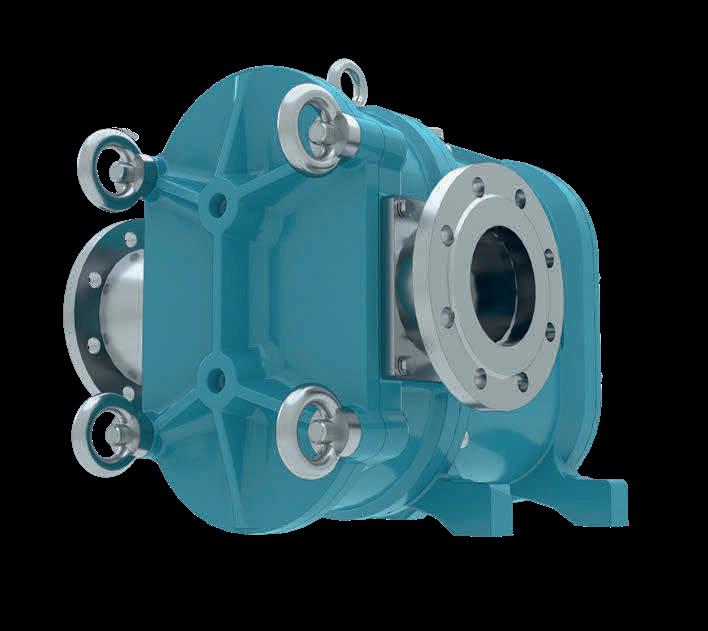
www.boerger.com
Municipal Representatives:
Scrubber systems are used to control the fumes. No restraint or ladder attachment bands circumscribing the tank are allowed. Cable restraint systems must pass cables over the top of the tank. Hydrochloric acid requires the use of flexible connections with fittings on the lower third of the sidewall.
When it comes to protecting your equipment, your personnel, and your chemical supplies, cross-linked polyethylene tank systems are second to none. Not only are they a smart financial investment, but they can also outperform other tank options for reliability, safety and longevity.
Marshall Lampson is with Poly Processing Co. Email: mlampson@polyprocessing.com

The future of our communities relies on the commitments we make today. EPCOR’s annual ESG report covers progress on the North American utility’s sustainability journey along with stories on innovative projects that are helping pave the way. This story shares how combining the power of the sun with new energy management technologies at the kīsikāw pīsim solar farm helps deliver safe, reliable water to communities in Alberta’s Capital Region.
By Curtis GillespieThe kīsikāw pīsim solar farm at EPCOR’s E. L. Smith Water Treatment Plant in Edmonton is an undertaking that tells us much about our past, present and future.

Located on former reserve lands of Enoch Cree Nation, the Cree name was gifted to EPCOR by the Nation, and means “daylight sun.” Today, the site is used as both a resource for the community and place of ceremony for the Nation.
The renewable energy solar farm and battery system help power one of two plants that provide Edmonton and more than 90 communities and counties with clean potable water.
The project is also a glimpse into the future.
EPCOR’s Distributed Energy Resource Management System (DERMS) is an innovative way to manage electrical energy. Solar panels produce energy, but where that energy goes depends on the needs of the moment. It first needs to be collected, converted, and then conveyed. When the plant needs power, the energy is directed there. When
there is surplus power and battery capacity, the batteries can be topped up. If the plant and batteries don’t require solar energy, the surplus can go to the provincial grid.
EPCOR’s DERMS-enabled system acts as an air traffic controller overseeing water plant operations, solar generation, battery storage and the grid. DERMS directs electrical traffic in real-time, managing supply and need.
Chris Chapelsky is EPCOR’s senior manager for grid transformation. “At its heart, DERMS is a computerized
control system,” he says. “We can model, monitor, forecast, and leverage distributed energy resources across our entire grid.”
Trina Manning is senior manager of sustainability with EPCOR, and adds that: “What’s innovative is how the pieces of the system talk to one another and how decisions are made. DERMS changes the way the grid functions in directing electricity to the plant, to batteries or to the grid. And it happens every second of the day.”
Nathaniel Papay, an electrical
engineer, has been with EPCOR his entire career, the last decade as a project manager. What makes DERMS unique, he says, is the integration and coordination. The solar farm and battery are technically twin systems arranged side by side, allowing for critical redundancy.

“There are two electrical cables coming into the water treatment plant,” he says. “We basically have two solar farms and two systems. So, if one cable fails, we can still run the plant.” This helps protect Edmonton’s primary
source of clean drinking water, while also supplying it with clean energy.
DERMS controls it all not just for EPCOR, but as part of the larger system. “We use it to monitor distributed generation across the grid,” says Papay. “It can ‘see’ how much power we’re using, storing, and sending to the grid, but it also allows for us to be integrated with the entire regional system.”
Solar, wind, and other carbon-free energy sources are a big part of our energy future, but having many different systems across the grid means
a more complex flow of energy. Making the most of what is available, DERMS is key to grid transformation and how we are going to manage our energy future.
The day will come, says Manning, when people will be generating their own electricity to supply their own battery systems. “DERMS is going to play a really important role. When everyone plugs their car in at the end of the day, how do we shift loading to where it’s needed? It’s not just about one water treatment plant, it’s about millions of people.”
DERMS is a way to make sure the switch flip of the future produces electricity. EPCOR’s goal is to be a net-zero entity. That means doing the technical work, but also bringing people along for the ride.
“Helping people see that a new system is more reliable is going to be critical,” says Manning. “We have a vision for rethinking utilities to reduce our environmental footprint, but we have to be patient, too. Different perspectives are important. Community engagement is how everyone benefits.”
“DERMS is really all about what’s next,” says Papay.
Which in some ways is the point. Yes, DERMS oversees the regulating, storing, and directing of electricity. But it’s also a tool to help us prepare for the future.
Discover more about EPCOR’s sustainability journey at EPCOR.com/esg

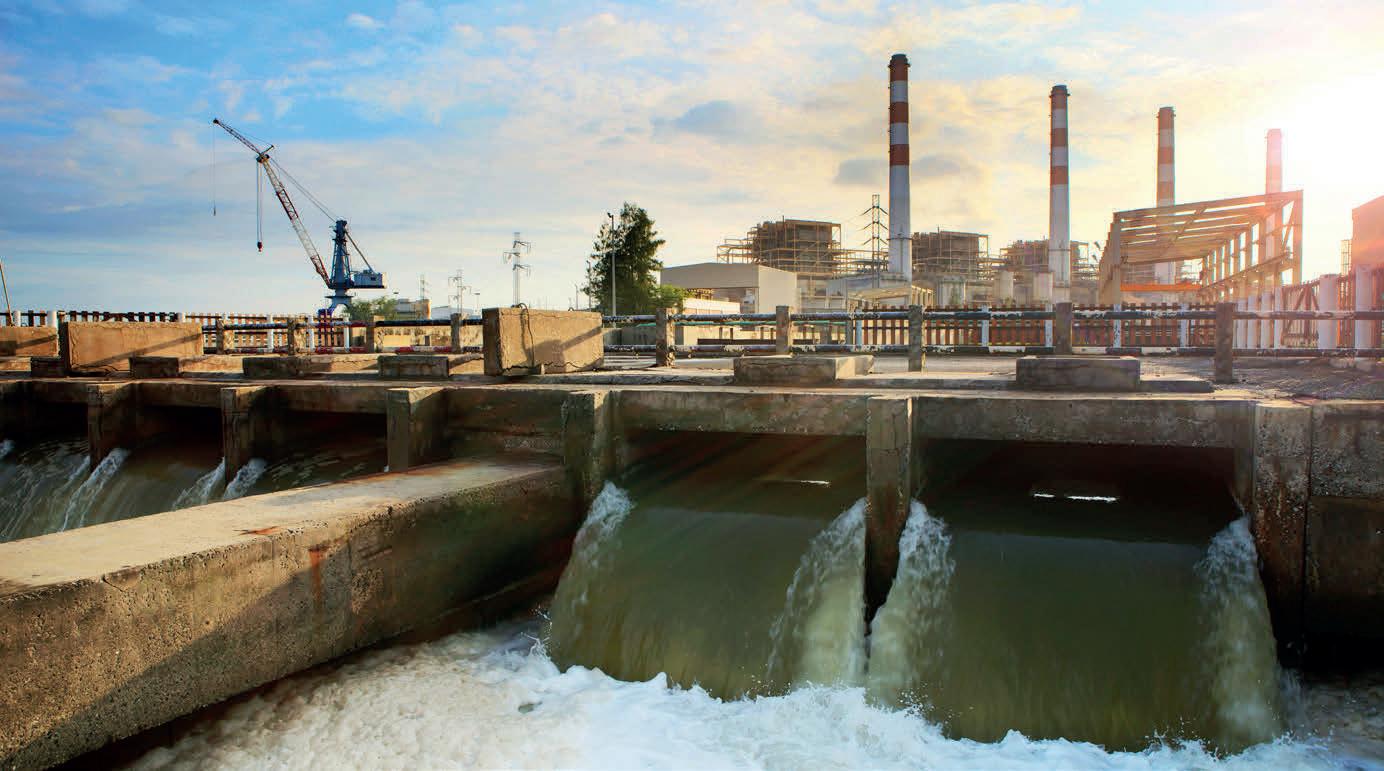 By Marc Hunt
By Marc Hunt
Many industries use water either when producing commercial products or for cleaning activities during the production process.

Different industries produce different types of wastewater. Metal finishers produce sludge (liquid waste) containing heavy metals, which can harm the environment and people’s health. Industrial laundries can contain oil, grease, heavy
metals, and volatile organic compounds (VOCs). Steel and iron production uses water for cooling metals and separating byproducts, which can be contaminated with ammonia, cyanide, and waste acids. Food processing produces waste that
can contain pesticides, fertilizers, and different types of organic matter.
Wastewater management is an essential component of running a commercial or industrial enterprise. Government regulations require the removal of organic and inorganic pollutants from industrial sewage. Management includes the treatment of effluent before the water is discharged back into the land or water supply or reused in commercial operations. As a result, companies must invest the appropriate resources in their waste management.
However, the landscape is changing, and companies that produce industrial wastewater must keep pace. They can no longer discharge it to the sewer for treatment at a municipal plant. Dwindling water resources, stricter government monitoring and reporting requirements, and discharge processing limits are forcing companies to reassess their water footprint.
In Canada, all levels of government share responsibility for managing the collection, treatment, and release of wastewater. The federal government is responsible for managing the risks posed by substances listed under the Canadian Environmental Protection Act (CEPA). The Act includes regulations for nine specific industrial sectors (e.g., metal casting, iron and steel manufacturing, organic chemical manufacturing). Under
Wastewater management is an essential component of running a commercial or industrial enterprise. Credit: manin, stock.adobe.comthe Wastewater Systems Effluent Regulations, the federal government has jurisdiction to regulate wastewater management in the provinces and Yukon.
Except for federal lands and First Nations reserves, provincial, territorial, and municipal governments have jurisdiction over wastewater. In Ontario, for example, the Ontario Water Resources Act (OWRA) regulates discharges of wastewater to the natural environment.

Most municipal governments own and operate their wastewater systems, and set their own standards for wastewater management. They can also pass their own sewer use by-laws. Some municipalities have adopted more stringent discharge limits for specific types of contaminants, as well as limits on the total suspended solids (TSS) in the company’s wastewater (e.g., 300 ppm).
One key reason is their facilities cannot handle the growing amount of industrial waste being sent through the municipal sewer systems. The increasing loads on the treatment plants have created various problems when releasing the final effluent to the environment, such as raising the water bodies’ biological oxygen demand (BOD) levels, which reduces water quality. With growing emphasis on protecting limited water resources, more municipalities are expected to follow suit.
Companies must treat their industrial wastewater before reusing it or releasing it into the environment. This means setting up their own wastewater treatment facility, or engaging with a third party to treat their industrial wastewater. All industrial wastewater facilities require environmental compliance approval to either set up a new wastewater treatment facility, or to use, operate or change an existing facility. However, environmental compliance approval usually sets site-specific effluent limits.
Environmental compliance approval also requires proper monitoring and reporting to operate the facility. Industrial facilities that discharge wastewater into lakes and rivers must sample and analyze their wastewater, and then submit those results. Sampling and analysis must be performed according to protocol. Companies within certain industrial categories must submit their results electronically.
Water use and wastewater management play a critical role in companies’ environmental, social and governance (ESG) and corporate social responsibility (CSR) performance. There are growing concerns (as well as increasing government and public scrutiny) about the impact of pollution, climate change, and water consumption.
Responsible wastewater management can greatly improve a company’s ESG profile, as well as reduce their operating costs and operational risk. Many companies are increasingly reconsidering and optimizing their water footprint to meet stricter regulations on water withdrawal and discharge, while also safeguarding water supplies to sustain maximum uptime of their production.




An efficient industrial water treatment process can reduce operational costs and support sustainability. Because indus
trial processes use significant amounts of water, increasing the circularity of wastewater can help treat water for reuse and recycling, and increase revenues through the sale of captured waste byproducts.
However, companies with their own wastewater management facilities are facing a number of challenges. The key issue is space, as there’s often no more room for expansion to handle increasing wastewater management demands. So, they have to improve the technologies they are using, upgrade their infrastructure, and streamline wastewater management processes.

Companies can make better use of their existing technology to adapt to process changes. For example, a gasketed plate heat exchanger can be reconfigured and optimized for different purposes. This can include optimizing its design to increase energy efficiency, adapt to a change in media, manage an increase in production capacity, and reduce the requirement for maintenance
Another option is to engage in tertiary filtration, which involves polishing the final effluent prior to discharge into the environment. This process reduces the amount of TSS, which can cause high oxygen damage to the ecology of lakes and rivers. Tertiary treatment is effective when secondary waste-

water treatment is insufficient for meeting the municipality’s discharge criteria. The water is clean enough to be discharged into nature, or even reused for industrial applications.


Solid-liquid separation is a common part of the manufacturing process. Decanter centrifuges are effective in separating solids from liquids within a single continuous process. They are commonly used for the sludge thickening and dewatering process in municipal and industrial wastewater treatment plants. The centrifuge works to separate solids from the water, which can be repurposed as organic fertilizer.
Wastewater often has a higher temperature when it is ready to be discharged and that heat can be recovered in spiral heat exchangers. The recovered heat can then be reused within the plant (e.g., to maintain the temperature of biological digesters). The result is greater energy savings and reduced emissions.
New technologies are enabling companies to do more with their wastewater management and treatment facilities. For example, companies can use membrane bioreactors to “polish” their wastewater to a very high level, making it completely








clean when it is discharged into the natural environment. The membranes are able to filter out much smaller particulates than typical filters, and can be configured to adjust the size and level of filtration required. The equipment has the additional advantage of fitting within a smaller footprint. As a result, wastewater management facilities can use membrane bioreactors to complement their current infrastructure and improve upon their processes.
Companies in the wastewater management space are also finding ways to reduce their water usage, as well as improve energy and process efficiency. This is integral for companies in areas with declining water resources. They can optimize their water footprint by focusing on water conservation, wastewater treatment, water reuse, and the establishment of circular water systems.
“Our customers increasingly have to reconsider and optimize their water footprint to meet stricter regulations on water withdrawal and discharge, while also safeguarding water supplies to sustain maximum uptime of their production,” says Nish Patel, of Alfa Laval. “Most are either assessing their water footprint or have already done so. They rely on water for cleaning and cooling. If they are operating in water-intensive industries, they rely on it as an ingredient. Also, they rely on being able to treat wastewater and if possible, reuse it into their processing line.”
Cleaning wastewater is a constant challenge, and some substances are very difficult to remove with current technology. One example is per- and polyfluoroalkyl substances (PFAS). These contaminants have been found in many major sources of water across Canada, including the Great Lakes. They do not break down in the environment or in the human body and many current wastewater treatment methods are incapable of removing them. Membrane technology is currently being tested to determine its effectiveness in removing PFAS from wastewater.


Water is quickly emerging as our most critical natural resource. Companies that have committed to sustainability targets will not be able to achieve them without addressing excessive water consumption and water contamination. Transitioning to a wastewater management strategy that employs a more circular business model will help your organization to meet these goals.
An experienced partner can use their knowledge of the technology, and their understanding of the science behind the processes, to help your company improve its wastewater management strategy.
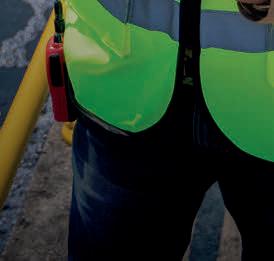





To sign up, or for more information, please contact wwtraining@rvanderson.com
Your company can reduce its industrial wastewater output, protecting against fees or fines for surpassing municipal discharge limits or industrial wastewater regulations. And you will be able to realize new value and generate additional revenue from your wastewater by reusing recovered water, and recycling or selling the byproducts.
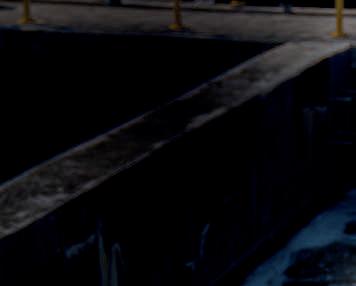



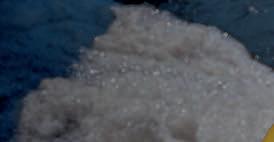
Marc Hunt is with Alfa Laval (Canada) Email: marc.hunt@alfalaval.com





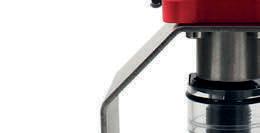 By ES&E Staff
By ES&E Staff








The University of British Columbia’s (UBC) Bioreactor Technology Group says it has found a cost-effective method to extract phosphorus from wastewater sludge and convert it into a practical solid residue called hydrochar. The process integrates hydrothermal liquefaction. It uses a combination of heat, water and phase separation to recover the phosphorus, which has industrial application uses as well as fertilization.
“We were able to identify, for the first time, the kinetic reactions of phosphorus leaching from hydrochar to optimize the recovery of useful materials, such as what is needed for fertilizer,” says Huan Liu, a doctoral student with UBC Okanagan’s School of Engineering and lead author of a new study investigating this method.



Liu calls phosphorus a “non-renewable, but essential, element for life.” He says many countries rely on imports for their supply, which has created political and economic risks. “On the other hand, phosphorus discharge from waste sources, such as wastewater, is a major contributor to aquatic eutrophication, causing severe environmental challenges including algae blooms and dead zones in lakes,” Liu added in a statement from UBC.
Liu says the new process mirrors what happens when mixing minerals and acids. It ultimately converts organic components of municipal wastewater sludge into a petroleum-like biocrude and concentrates the phosphorus into a solid residue called hydrochar. This hydrochar can have a total phosphorus about 100 times higher than that of raw sludge, making it comparable to the phosphate rock used in commercial fertilizers, the researchers explained.


Supervisor and principal investigator Dr. Cigdem Eskicioglu, a UBC professor, says that the phosphorus extraction process is important for wastewater utilities aiming to develop ways to recover usable nutrients from the system. “At a time when we are seeking to be more sustainable and looking for alternative fuels, extruding usable materials from waste is essential,” she says. “Recovery and recycling is the solution that also provides the double benefit of providing a secondary source of phosphorus that can be globally distributed and also help with environmental conservation.”
This latest study appears in the journal Water Research. It was funded by the Natural Sciences and Engineering Research Council of Canada and the Metro Vancouver Industrial Research Chair Program in Advanced Resource Recovery from Wastewater.


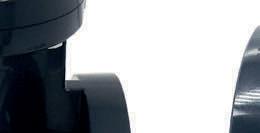









For more information, email: editor@esemag.com












 The extraction process integrates hydrothermal liquefaction. It uses a combination of heat, water and phase separation to recover the phosphorus, which has industrial application uses as well as fertilization. Credit: Kekyalyaynen, stock.adobe.com
The extraction process integrates hydrothermal liquefaction. It uses a combination of heat, water and phase separation to recover the phosphorus, which has industrial application uses as well as fertilization. Credit: Kekyalyaynen, stock.adobe.com
In order to ensure the rubber compound chosen for valve seats is safe for use in drinking water or wastewater applications, it should be thoroughly evaluated.
As water utilities are looking for ways to do more with less, some manufacturers are investing in research and development to improve products by using new materials to extend product life and value. A simple choice of material can impact the design life, function, and performance. One change that has all three beneficial outcomes for water distribution is moving from nitrile (Buna-N) to ethylene propylene diene monomer (EPDM) for valve seats.
Nitrile rubber or Buna-N, also known as nitrile butadiene rubber (NBR) and acrylonitrile butadiene rubber, is a synthetic rubber derived from acrylonitrile
and butadiene. Buna-N is a general-purpose oil-resistant polymer that has good resistance to solvents, oil, water and hydraulic fluid, with good compression set properties. It also has acceptable resistance to abrasion and good tensile strength in laboratory tests.
The resistance to solvents, particularly oils, has made Buna-N a popular elastomer candidate for use when collecting raw water, where pollution and illegal dumping have allowed petrochemicals to infiltrate freshwater supplies. Buna-N elastomers are also used in wastewater applications, where resistance to solvents and oils is important.
These properties are a reason Buna-N has been a widely used choice in North America for elastomeric seats used in multiple types of valves, including butterfly, rubber seated ball, and resilient seated check and gate valves.

It has always been the mission of water
utilities to provide safe drinking water, but contaminants are on the rise and municipalities are having to do more testing and look at a broader spectrum of treatment solutions.
One treatment that is becoming more common and in increasing quantities is the use of chloramines to disinfect drinking water. This has been standard practice in other parts of the world, and as a result, they have discovered that increased chloramine use leads to substantially higher rates of valve seat failure.
It became evident that chloramine usage was the cause of Buna-N elastomer degradation characterized as mass change. This is due to the rubber swelling up in the presence of chloramines. Mass change is the result of excessive water absorption. It is believed that other failure modes are increased susceptibility to breaking stress and strain, along with increasing hardness, where the rubber is simply losing its elastomeric properties.
When the integrity of any elastomer is compromised, chemicals or additives can leach into the drinking water. When certain standard minimum concentrations are detected, the rubber compound is designated unworthy for use in drinking water applications. This is per guidelines set forth through NSF/ANSI 61: Drinking Water System Components – Health Effects. In order to ensure the rubber compound for valve seats is safe for use in drinking water or wastewater applications, it should be thoroughly evaluated to the NSF standards as appropriate.
As the trend in chloramine treatment increases in North America, a new approach will be needed to ensure drinking water is safe and that valves continue to perform their important function without having to send out crews to replace failing seats, which can result in a service disruption.
EPDM seems to be a suitable and superior performing elastomer, in general, when compared to Buna-N. However, not all rubber compounds perform the same. There are some Buna-N compounds that perform very well under adverse conditions, as noted in AWWA
M75 – Elastomers for Waterworks: Pipes, Valves, and Fittings. The same can be said for styrene-butadiene rubber (SBR), natural rubber and neoprene rubber.
As new methods of disinfection come into play, manufacturers of water infrastructure will need to adapt and introduce new products to better meet the needs of the municipal water industry. The most common way to confirm the integrity of a specific rubber compound is by testing it under lab conditions.
The decision as to what rubber compound to use is commonly based upon past practice and often outdated specification language. Given significant research and its mandate to continuously innovate the functionality and extend the product life of water infrastructure solutions, Henry Pratt Company is moving to EPDM seats as the standard seat configuration for all Pratt® butterfly valves. EPDM is also readily available and globally sourced, reducing the challenges of supply chain issues that have arisen since the pandemic.

“By standardizing on one seat material, which removes some of the decision-making processes through providing an EPDM seat, the physical properties are better when held up against chloramine attack. We anticipate water utilities will welcome the upgrade. Once maintenance crews see the improvement in durability, we anticipate EPDM will be the preferred choice for replacement seats,” says Tom Velkovich with the Henry Pratt Company.
As materials improve and industry standards evolve, utilities often adopt these changes when they upgrade facilities or perform routine maintenance that requires replacement parts. Knowing what new materials and design improvements are available for new builds or plant upgrades is also key to ensuring utilities are well positioned to handle
the challenges of today and the evolving landscape of delivering safe drinking water to all citizens.
Timothy Fallon is with the Henry Pratt Company. Email: tfallon@muellerwp.com
PlumeStop Colloidal Activated Carbon is the Only Patented, Field-Proven In Situ Solution to Eliminate Risk From PFAS
PlumeStop® provides an immediate, sustainable PFAS solution that consumes no energy, generates no greenhouse gas emissions or disposal waste, and requires no permanent equipment installation or postinstallation operation.

PlumeStop has been used on government, municipal, airport and commercial sites globally.
It can be applied as a stand-alone remedy or combined with a Monitored Natural Attenuation (MNA) approach to manage PFAS and eliminate PFAS exposure risk.
Pratt butterfly valve.There’s no bigger priority in wastewater treatment than monitoring dissolved oxygen, and making sure measurements are accurate. Inaccurate dissolved oxygen (DO) measurements are disastrous for process optimization and budget.
Provide too little oxygen with aerators or diffusers and the organisms converting ammonia can die. This puts the whole process on hold until bacteria levels are restored, a process that can sometimes take days.
But, pumping in too much oxygen to avoid this mistake risks wasting energy and money. Chances are, less DO is required than is often thought, so accurate measurements are key to identifying the right balance and improving efficiency with confidence.
When it comes time to invest in equipment, selecting low-maintenance sensors that resist fouling and abrasion and don’t need frequent calibrations to preserve their accuracy goes a long way toward optimizing process control. Galvanic dissolved oxygen sensors are popular for their low initial investment.
But optical sensors can be a worthy investment in the long term. They hold calibration longer and are better at resisting abrasion and fouling. This leads to a longer lifespan with fewer maintenance requirements.
They are also more accurate at low DO concentrations and with smaller sample volumes, providing more consistent readings overall. Setup is easier, since they don’t require hydration or conditioning before use. Finally, they are unaffected by interferences from sulfides, sulfates, carbon dioxide, ammonia, pH or chloride.
While the initial upfront cost is higher, less frequent calibrations and maintenance, and better resistance to drift over a longer lifespan ultimately saves on labour
and repair costs while giving operators confidence in their data and decision making.
Not all optical sensors are alike, however. When considering choices, opt for a sensor without a wiper. Rather than providing more defense against fouling, optical sensors with wipers require much more maintenance. The wiper often abrades the sensing element, making more frequent sensor replacements necessary. Also, the wiper pad itself can require replacements as often as every two weeks in high-fouling environments. And, wiper motors often have high field-failure rates, making its benefit to the sensor obsolete.
In-Situ’s Rugged Dissolved Oxygen (RDO®) sensors feature passive antifouling technologies that are just as effective at keeping sensor faces clean, but with-
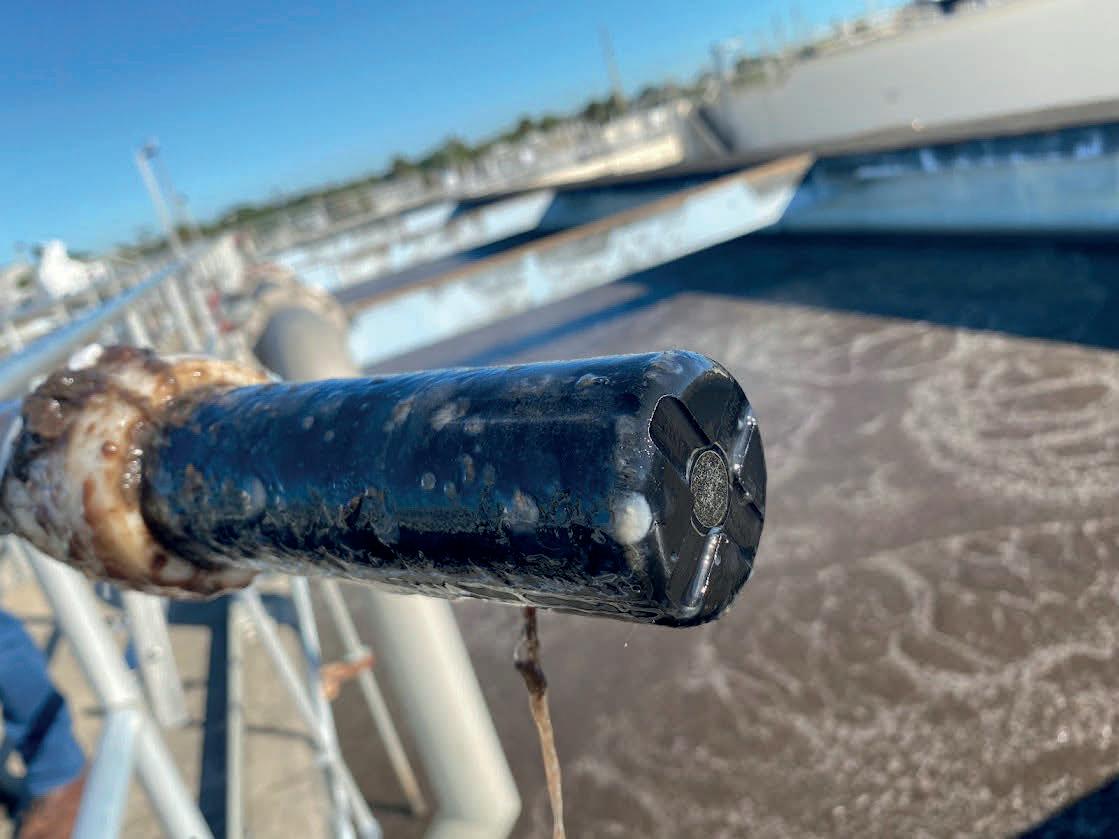
out the hassle and labour of an antifouling wiper. A flat sensor face resists debris buildup and ragging, while a multi-layer sensor cap protects the LED from abrasion in even the harshest conditions. If the sensor does become fouled, a simple cleaning procedure will restore accuracy.
In-Situ’s RDO sensors have other benefits as well. A sensor cap loaded with calibration coefficients makes setup and recalibration as easy as popping on a new cap. With this stable, long-lasting calibration method, replacement is only necessary once every two years. These sensors have excellent response time and stability in treated wastewater and industrial sewer discharge, and no hydration effects, even if the sensor dries out.
Wastewater treatment processes might be complicated, but your solutions don’t have to be. To get the right balance of
A flat face keeps sensors free of debris and fouling. If the sensor does become fouled, a simple cleaning procedure will restore accuracy.DO in process tanks requires the right balance of fixed and portable instruments.
Continuous DO data is invaluable. Getting the full picture of changes in DO over time allows operators to be proactive about managing aeration systems. In-Situ’s RDOX Optical Dissolved Oxygen Sensor features a housing designed for long-term monitoring in harsh environments. When installed on the end of a flexible mounting shaft, it provides accurate continuous DO data with minimal maintenance.
This setup provides continuous DO data without the need for a compressed-air cleaning system. The little maintenance the RDOX requires (manual cleaning every 3 – 6 months) is relatively infrequent, easy to learn and quick to perform. The same can’t be said of an air compressor failure.
If a system has the capability, it can automatically adjust aerators based on DO levels for instant energy savings. But even if that’s not an option, accurate continuous DO data is still the best tool for proactive and efficient aeration control.
If operators want to measure more than just DO, they can connect up to eight sensors to a 7300 Monitor with an expansion box for continuous monitoring of up to 16 possible parameters. These include total suspended solids, turbidity, temperature, conductivity, ammonium, salinity, nitrate and chloride. This monitor also supports infrared sensors that detect sludge blanket levels.
Using a combination of sensors from the same manufacturer makes it easier to cross-check fixed and portable sensors. Also, it is easier to train operators to use one type of equipment.
The RDOX Portable can connect to a Wireless TROLL Com and pair with iOS or Android mobile devices. The VuSitu mobile app allows operators to view live readings, set up logs and easily share data via email or cloud storage.
For offline monitoring, the OxyTech RDO Sensor pairs with its own portable monitor for dissolved oxygen measurements.
Getting accurate DO data doesn’t need to be complicated. With low-maintenance, accurate optical dissolved oxygen sensors and the right mix of fixed and portable probes, operators can have accurate DO data wherever, whenever and however it is needed to assess and create ideal dissolved oxygen levels.
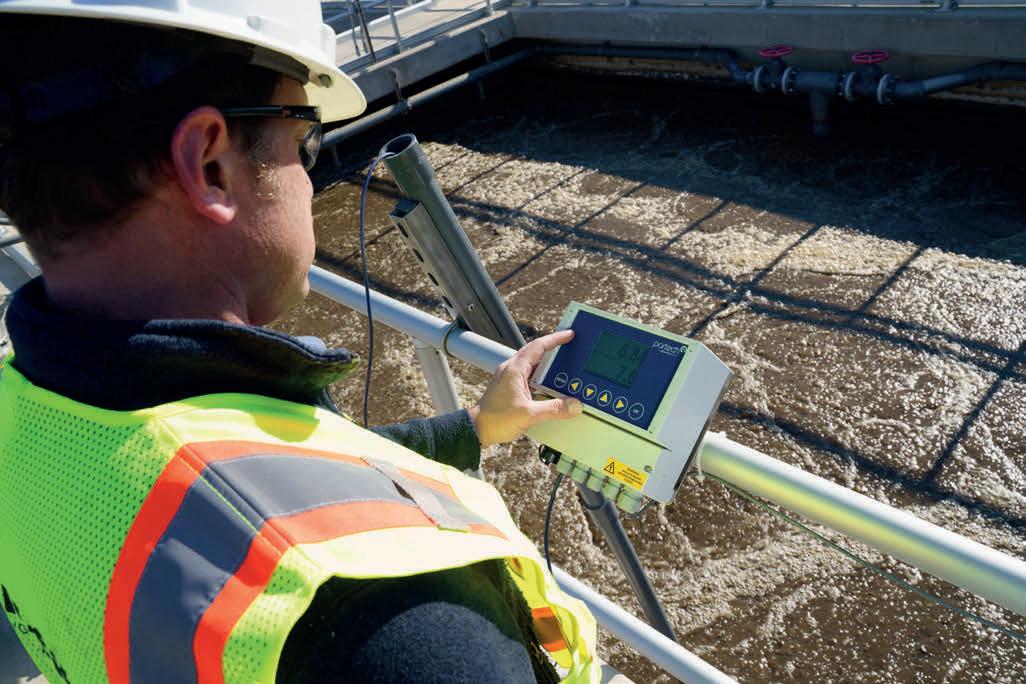
With accurate dissolved oxygen data, DO technology can pay for itself in energy reduction savings. Accurate, durable sensors and monitors provide all the data needed to control the treatment process and manage problems with reduced effort and cost.

Annmarie Delfino is with In-Situ. Email: adelfino@in-situ.com
ORIVAL WATERFILTERS
For Protection of:
For Protection of:
• Heat Exchangers
• Heat Exchangers
• Automatic Self-Cleaning
• Automatic Self-Cleaning
• Turnkey Systems
• Turnkey Systems
• ASME Construction
• 10-10,000 gpm Units
• 10 mic Filtration
• 10 mic Filtration
• ASME Construction
• No external power required
• No external power required
• Spray Nozzles
• Spray Nozzles
• Instrumentation
• Instrumentation
• Pump Seals
• Pump Seals
• I.E. & R.O. Units
• I.E. & R.O. Units
• Air Compressors
• Air Compressors
213S.VanBruntSt.,
Automatic Self-Cleaning WATER FILTERS ORIVAL Wastewater/Irrigation Pollution / Wet Scrubber
(201)568-3311
Fax(201)568-1916
Get a full picture of your tanks by connecting additional sensors for continuous data on up to 16 parameters. By Marta Green
By Marta Green
In November 2021, an atmospheric river combined with a large, early snow pack and warm temperatures led to widespread flooding of the roads, bridges, and water and wastewater systems in Merritt, British Columbia. The city’s 7,000 residents were evacuated for weeks, with some families unable to return to their homes for much longer.
Associated Engineering (AE) has worked with the City of Merritt since 2012, when it assisted with preparing an integrated stormwater plan. In 2016, AE completed a source water risk assessment and protection plan. During development of the source protection plan, a

technical advisory committee was established, including planners, administrators, and operators, and regional health authority representatives.

The committee reviewed the drinking water hazard inventory, discussed the risk ranking (likelihood of occurrence x magnitude of consequence) of each hazard, developed actions to reduce the likelihood of hazards, and developed emergency response plans for hazards over which the city has less control.
Some key technical aspects of the source protection plan that aided in the post-flood work included redundancy in the well field (the city has five wells,
with four within the inundation zone, and only one well with electrical damage); redundancy in water treatment
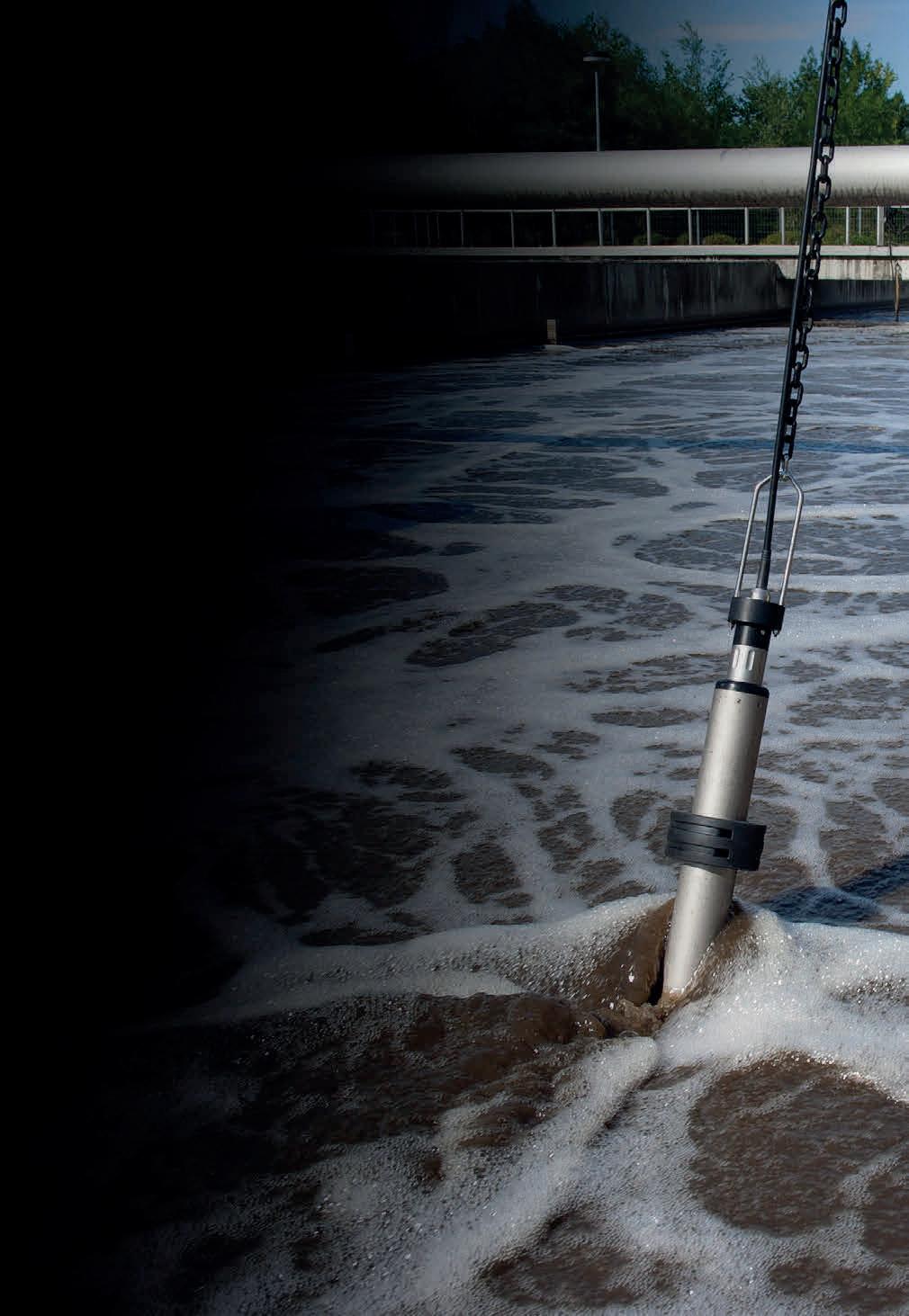




 Pictured left to right are Kevin Vilac (City of Merritt), Mike Mouland (City of Merritt), Matt Lozie (AE), Diana Tesic-Nagalingam (Interior Health), Christine Indrigo (AE), and Marta Green (AE).
Pictured left to right are Kevin Vilac (City of Merritt), Mike Mouland (City of Merritt), Matt Lozie (AE), Diana Tesic-Nagalingam (Interior Health), Christine Indrigo (AE), and Marta Green (AE).
(three different ultraviolet (UV) and chlorine water disinfection stations); and source protection controls at the well head (data logger conduit openings at the wellhead were plugged).
Five days after the 2021 flood, first responders allowed access to the technical support team to start recovery, and AE’s team mobilized to site. The project team had already instituted some flood protection measures. It reviewed the scouring at the river edge and at the well sites, as well as wellheads for evidence of breaches of flood water. The team also reviewed the aerial photos of the upper watershed for signs of new hazards and contaminants of concern.
AE’s team reassessed the transport



meet drinking water treatment objectives for Groundwater at Risk of Containing Pathogens (GARP) wells.


The project team also met with Interior Health’s drinking water officer and city operators, to review the new draft risk rankings and the action plan. Actions taken included re-contouring the scoured areas around the wellheads, and a robust sampling program to confirm the updated conceptual model of groundwater flow.
For the water system recovery plan, the team set up trigger field parameters, so operators could quickly test if a well contained flood water or “well water”. AE also created a GIS database to show pass or fail to focus on target areas.

preparation, as well as a strong relationship with the city, we worked as a team under an extremely stressful environment. The city was able to reduce the Do Not Consume Order and then remove the Boil Water Advisory within three weeks.”
Associated Engineering is also supporting the city’s flood mitigation planning, and wastewater receiving environment sampling and reporting. The flood planning and dyke building is currently in early planning stages. The city is working on a plan to make sure the well infrastructure can withstand a flood event, including having all electrical panels above the flood level, air release valves for well flushing above the flood
Canada and two provincial governments are making substantial water and wastewater infrastructure investments in the British Columbia community of Bowen Island and the New Brunswick Town of Rivière-du-Nord.


For the B.C. island municipality of just under 4,000 residents, a more than $2.1 million drinking water investment will enable the connection of the existing Eagle Cliff Water System, which services about 100 users, to the Cove Bay Water System, federal officials announced.
Eagle Cliff is supplied by a deep groundwater well and an open surface reservoir. It is treated by flow-paced injection of sodium hypochlorite into the water supply main with limited contact time and is UV disinfected.

The project will also see the replacement of culverts, the installation of new fire hydrants and service connections, and approximately 1,300 metres of watermain to connect the two Bowen Island systems.
The federal investment of $841,200 comes from the Green Infrastructure Stream of the Investing in Canada Infrastruc ture Program. B.C. is investing $700,930, and Bowen Island Municipality is contributing $560,870.
In New Brunswick, the Town of Rivière-du-Nord was formed through the 2023 local governance reforms. Now, the new community will construct a new 4,100-metre sanitary sewer system with two lift stations. The project also involves
For the B.C. municipality of Bowen Island—just under 4,000 residents—a more than $2.1 million drinking water investment will enable the connection of the existing Eagle Cliff Water System to the Cove Bay Water System. Credit: Josue, stock.adobe.com
an aqueduct system connected to the existing infrastructure with one booster station, and the reinstatement of road infrastructure.
Additionally, more than $2.3 million is being invested in the nearby New Brunswick community of Tracadie. Plans are underway to renew some of its aging sanitary and storm sewers, and watermains. The project also includes replacing a total of more than 200 metres of sanitary sewer and iron pipe watermains with PVC lines and more than 100 metres of concrete storm sewers.

Flash flooding damaged a pump station in the Nova Scotia community of Bedford recently, causing sewage to flow into Sandy Lake. The flash flooding damaged the pump and its electrical systems, taking the station offline for a couple of days, Halifax Water officials said in a statement.

According to provincial weather officials, the province experienced rainfall amounts of more than 250 mm from July 21 – 22, which is close to the average amount for an entire summer, and resembles the rainfall impact of a hurricane. At least three people died after being swept off the road and submerged during evacuation efforts for this torrential rainstorm that resulted in a province-wide state of emergency. The prov-
ince launched a flood registry for people unable to leave their properties.

Use of Sandy Lake was immediately prohibited and residents were asked to limit flushing and pouring into their drains to minimize the amount of wastewater released into the environment. Halifax Water crews used vacuum trucks to transport wastewater away from the station to another nearby facility with available capacity. Crews then began work on commissioning a new control system, according to a community notice.
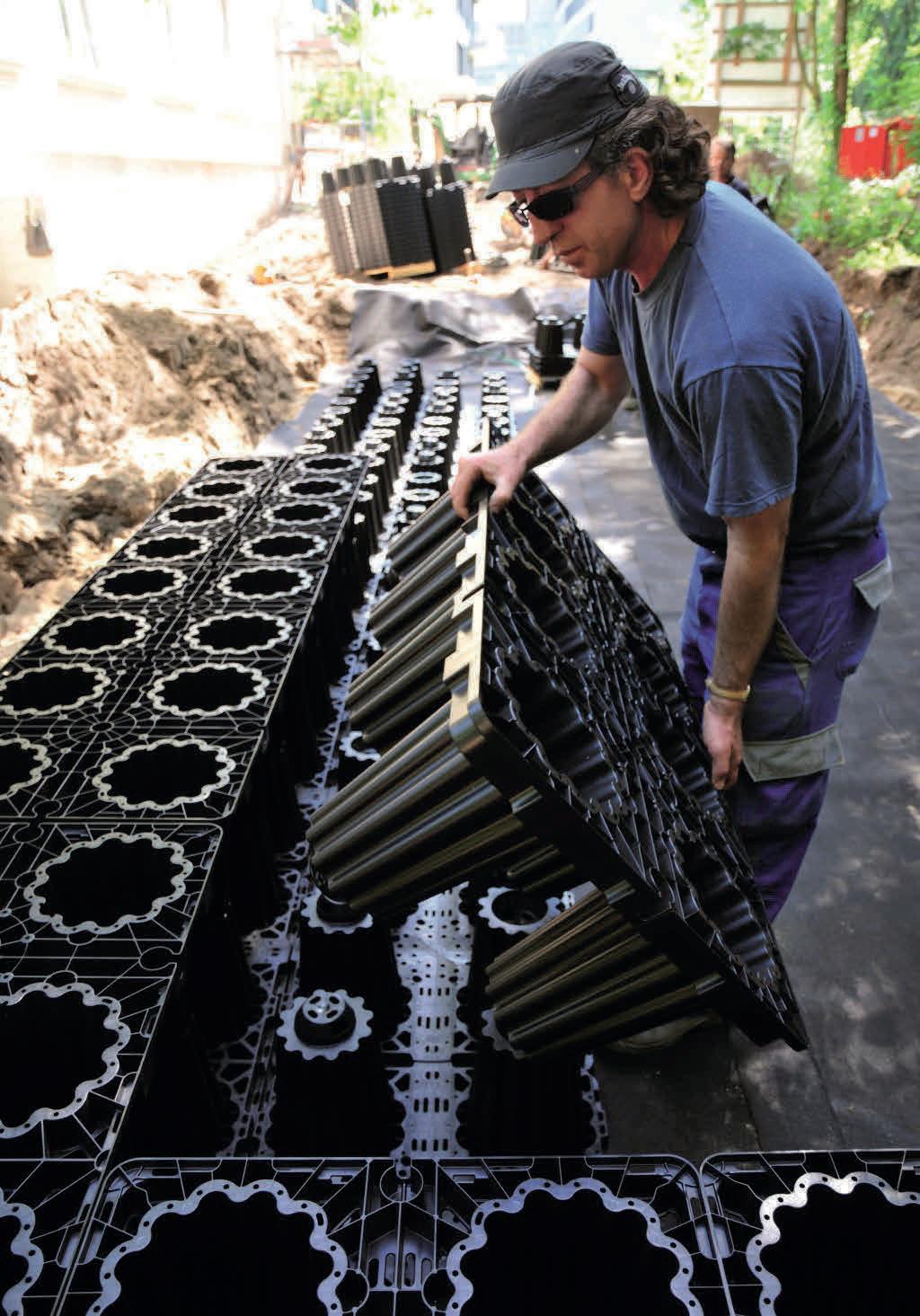
In the northeast corner of Nova Scotia, the province is investing almost $2 million in water and wastewater infrastructure upgrades that will help the Town of Antigonish and the Municipality of the County of Antigonish prepare
Halifax Water crews used vacuum trucks to transport wastewater away from the station at Sandy Lake to another nearby facility with available capacity. Credit: Halifax Regional Municipality
for future growth.
Antigonish is upgrading watermain and sewer infrastructure, building a stormwater sewer and curbs on both sides of several streets. The province is contributing $822,000 to increase the capacity of the watermain and sanitary systems to better serve the existing community.
For more information, email: editor@esemag.com
According to the National Waste Characterisation Report on the Composition of Canadian Residual Municipal Solid Waste (MSW) released in 2020, approximately 3% of the total quantity of MSW is comprised of disposable diapers and incontinence materials. Most of these disposal diapers are rejected by most organics processing facilities in Canada and are currently landfilled.
In the days of our grandparents, cotton diapers were used for infants and small children. After use, the exercise of washing and drying them was the norm. Today, most people use disposable diapers, as they are convenient to use and easy to dispose of.
Disposable diapers consist of an outer shell (mostly polyester, polyurethane foam or synthetic rubbers), super absorbent polymers, cellulosic fibres, as well as minor amounts of tapes, elastics, and adhesive materials. After their use, they then include human waste.
The average weight of a diaper varies depending on the size and age of the user. As such, the effectiveness of diaper recycling should be based on the percentage/weight reduction and organics recovered as opposed to the total amount processed.
Many communities today have Green Bin Programs (the curbside collection of source separated organics or SSO). A simple way of capturing diapers and incontinence materials for recycling is to include them within the allowable items in SSO collection programs.

In Canada, several municipalities, including Toronto and York Region in Ontario, are accepting diapers and incontinence materials as part of their SSO programs. Accepting diapers as part of an SSO program increases the participation rate in the program. As a
result, Toronto is collecting around 200 kilograms annually of SSO per single family home. Diapers represent around 9% of the total amount of organic waste collected.
Once collected, diapers diverted from landfills can be co-composted, or co-processed through anaerobic digestion (AD). Many municipalities have come to the realization that co-composting is energy intensive, produces a compost with a quality dependent on the collection program, and has a positive carbon footprint.
On the other hand, AD has a net negative carbon footprint. Also, it creates a fertilizer product as well as biogas, which can have several revenue generating uses.
Municipalities are increasingly moving towards AD for the processing of SSOs because of revenue generated through the production of energy by converting biogas to consumable products. These include direct heat, electric-
ity and renewable natural gas (RNG). The other reason for the shift to AD is its negative carbon footprint.
The processing of diapers as part of an SSO program can be challenging. All SSO AD facilities require pre-processing, so that non-organic materials are removed. Most pre-processing systems currently in use remove the bulk of the diapers from the SSO stream for eventual landfill disposal, without actually removing the organic content.
The key to successfully managing diapers in an SSO program is to have an efficient pre-processing system that separates the digestible material contained in the diaper from the non-digestible portion (mostly plastics).
One company that is successfully processing diapers is CCI Bioenergy Inc. (CCI), a subsidiary of Evergreen Environmental Inc. CCI Bioenergy’s patented BTA® process is the key to the suc-
Many communities today have Green Bin Programs, which allow the curbside collection of source separated organics. Credit: Olha, stockadobe.comcessful management of diapers in an AD facility. BTA’s patented hydro-mechanical pre-treatment solution is based on the process of hydro-pulping incoming materials before the AD process. It is currently used at many AD facilities in Europe, as well as in North America.


CCI BioEnergy is the exclusive North American partner for BTA supplied process. In Canada, the BTA process is used at the City of Toronto’s Disco Road AD facility. Veolia, in partnership with CCI BioEnergy, is operating the Toronto facility.
In general, the BTA hydro-pulping process focuses on de-fibreing of organic materials to enhance the subsequent AD process, removing non-biodegradable heavy contaminants (stones, large bones, batteries, metallic objects, etc.) and the removal of the light fraction of non-biodegradable contaminants, such as textiles and plastic.

In separating the non-organic from the organic waste, its process does not destroy the non-organic components to the point where it is impossible to extract them from the process.
Using recycled process water, the BTA pulping solution uses both force and friction as the tools to accomplish its goals. This pulping solution uses radial and concentric flows to create high shear stress in the water/organic material suspension inside the pulper. This action not only opens bags, it also separates organic materials from inorganic materials and pulps the organic fraction, including the organic fraction from diapers and incontinence materials.
After the pulping process is completed, the waste-suspension is extracted through a sieve plate with a perforation limit of 10-mm at the bottom of the pulper. In a second step, the pulper is filled with process water and the light fraction (mostly plastics) is now cleaned and removed via the BTA hydraulic raking system.
The following steps are essential for effective separation of the non-digestible portion of SSO:
• Defibration and dissolution of the digestible substances by the shear forces introduced in the pulping process;


• Sieving of the produced suspension via the screen at the pulper bottom, which prevents the non-digestible


impurities, such as plastic films, etc., from being discharged.




Plastics, including the non-organic outer shell of the diaper are efficiently and effectively removed for disposal or alternative use.
After the extraction of the pulp, via the perforated sieve, the organic suspension is then passed through BTA’s grit removal system, where grit, sharps and fines are removed. The resulting clean pulp is stored in a pulp buffer tank and subsequently fed into anaerobic digesters, where the organic materials are converted into biogas digestate.
Generated biogas can subsequently be used to generate heat or electricity, or be further processed to produce RNG or green hydrogen. The digestate is of high quality and can be converted into a valuable fertilizer product.
Municipalities considering the inclusion of diapers in their source separated organics program should not ignore the value of diaper recycling through anaerobic digestion processing—if appropriate pre-processing technologies are used. At first glance, it represents a significant diversion of organic waste from landfills and in addition, generates multiple value-added products, such as biogas products, fertilizer products and greenhouse gas related benefits. It also contributes to the increased participation and credibility of source separated organics collection programs.
John Nicholson is with CHAR
Technologies. Email: john.nicholson@chartechnologies.comThe key to successfully managing diapers in an SSO program is to have an efficient preprocessing system that separates the digestible material contained in the diaper from the nondigestible portion (mostly plastics).
High-performance butterfly valves play an instrumental role in fluid control applications, particularly in water, wastewater, and environmental protection sectors. These valves, characterized by a rotating disc that regulates fluid flow, are known for their robustness, versatility and efficiency.
As the importance of efficient and sustainable water treatment continues to grow worldwide, so does the necessity for effective tools and equipment in these processes. At the heart of any water treatment facility lies a myriad of control systems that manage the flow and processing of water. Butterfly valves play a key role in these systems, thanks to their unique design and operational capabilities.
The distinct structure and functionalities of butterfly valves, coupled with their compliance with various industry standards, make them a practical choice in demanding environments.
Butterfly valve design centres around a rotating disc mounted on a shaft. The disc, which may be flat or slightly conical, is positioned in the centre of the pipe and rotates to control fluid flow. This configuration is key to the valve’s function and is engineered to reduce turbulence and pressure drop, although the extent of this can vary based on the disc design and the valve’s position.
Valves often comply with a range of industry standards, such as ASME B16.34 and AWWA C504. These standards define various parameters such as pressure-temperature ratings, face-to-face dimensions, and materials for the body, disc and shaft, among others. While these standards provide a broad framework, individual valve design may differ significantly based on manufacturer, application, and specific user requirements.
The ability of butterfly valves to both isolate and moderately throttle fluid flow is another engineering advantage. This is typically achieved through a quarter-turn mechanism that rapidly transi-
tions the valve from a fully open to a fully closed position or anywhere in between. However, the degree of control can depend on factors like valve design, actuation mechanism, and flow conditions.

Butterfly valves’ capacity to handle large volumes, the durability they offer, their cost-effectiveness, and the operational efficiency they bring are of substantial importance in maintaining smooth operations in water treatment facilities.
The wide flow path of a butterfly valve when fully opened often allows for the efficient management of large volumes of water. This feature, however, can depend on the valve size and the pressure drop across the valve, among other factors.
Butterfly valves, especially those made from resilient materials like stainless steel, carbon steel, or ductile iron, offer high durability. Still, the longevity of these valves can be influenced by factors such as the corrosiveness of the fluid,
operating pressure and temperature, and maintenance practices.
In comparison to other types of valves, butterfly valves tend to be more cost-effective due to their simpler, less material-intensive design. However, this cost advantage can vary depending on factors such as valve size, material, actuation mechanism, and the cost of installation and maintenance.
Butterfly valves are typically more energy-efficient due to the lower torque required to rotate the disc. This advantage can be more pronounced in applications with frequent valve operations. Nevertheless, the efficiency gains also depend on the actuation mechanism and the operating conditions.
Despite the many advantages butterfly valves offer, it is crucial to be aware of their limitations. Certain characteristics of butterfly valves may pose challenges in specific applications, requiring engineers to consider alternatives or
Butterfly valve design centres around a rotating disc mounted on a shaft. Credit: Sergey Ryzhov, stock.adobe.comadditional measures to address potential issues.
While high-performance butterfly valves often feature advanced sealing mechanisms to minimize leakage, some risks may still be present, particularly for standard butterfly valves. Factors like seal material, operating conditions, and maintenance practices can influence this leakage potential.
The intrusion of the disc into the flow path can cause flow disturbance, which could lead to issues like cavitation or noise. This effect is usually more pronounced when the valve is partially opened and depends on factors like the disc design, flow velocity and fluid properties.
Butterfly valves are generally not ideal for applications requiring fine flow control or throttling. The degree of this limitation can depend on factors such as valve design, the actuation mechanism, and the range of flow rates required in the application.
Installing this type of valve can sometimes be challenging. Attention needs
to be paid to factors such as valve orientation (horizontal or vertical), support for the valve and piping, and alignment between the valve and the piping system.

While butterfly valves offer many advantages in water treatment facilities, it is important to be aware of the fact that they may not always be the best fit for all applications. Depending on the specific requirements and constraints of an operation, alternatives like ball, gate, or globe valves may be more suitable. Ball valves can provide better sealing and throttling capabilities than butterfly valves, but their suitability can depend on the required flow rate, fluid properties, operational needs, and other similar factors.
While gate valves can offer minimal flow resistance and good flow control, they might not be as durable or as quick to operate as butterfly valves, especially in larger sizes or higher-pressure applications.
Globe valves are known for their excellent throttling capabilities but, due to their design, they introduce significant flow resistance, which may impact system efficiency. Other factors to consider would include the cost, fluid properties, and the required flow control precision.
When making a choice among these options, engineering factors such as fluid characteristics, operating pressure and temperature, control requirements, cost, and space constraints should be reviewed in detail.
Gilbert Welsford Jr. is with ValveMan. For more information, visit: www.valveman.com

Over 100 federal sites and thousands of industrial sites throughout Canada are impacted by per- and polyfluoroalkyl substances (PFAS), which are sources of contamination in groundwater and drinking water. In areas such as airports and defence installations, where aqueous film-forming foam (AFFF) containing PFAS was regularly used for firefighting training, the remaining PFAS can move away from the original location (i.e., the source), posing a risk to nearby communities potentially exposed to these chemicals through various pathways.
Addressing these sources to stop PFAS migration and prevent downstream exposure is a focus of the environmental remediation industry as pending regulations establishing PFAS cleanup levels begin to take effect. In situ treatments preventing migration offer an effective, low-cost, and sustainable solution to this widespread problem.
Recently, an in situ approach to treat the source of a PFAS release was field-tested at two source zones. The tests used a new, concentrated colloidal activated carbon (CAC) material commercially available as SourceStop®, that was applied to form a horizontal barrier against vertical PFAS migration (leaching) at the bottom of each target treatment zone. SourceStop is a micron-scale aqueous CAC suspension that prevents PFAS leaching through soils. Its use effectively extends the protection against exposure for communities and private citizens living downstream of these sources.
Field pilot demonstrations for the in situ PFAS source zone treatment were completed at firefighting training areas on two aviation sites in Grayling, Michigan (Site 1) and Everett, Washington (Site 2). Repeated AFFF discharges at both sites had left high PFAS concentrations in the shallow soils leaching to the underlying groundwater.
An approximate 21-square-metre area and a three-metre vertical mixing zone were demarcated at each site, and utilities were cleared for the SourceStop pilot test. The pilot test areas were placed within more extensive PFAS source zones and only partially encompassed them.
The near-surface soils were predominantly sands, overlain by a topsoil layer. At each site, groundwater was more than one metre deeper than the treatment depth, occurring entirely within the vadose zone (i.e., non-saturated soil).
Pre-treatment soil samples were collected within each site’s target treatment area. Leachate extracts were prepared from them and subsequently analyzed for PFAS to provide baseline
leachate concentrations using U.S. EPA-approved methods.
The maximum PFAS concentrations in soil leachate were 3,835 nanograms per litre (ng/L) at Site 1 and 16,115 ng/L at Site 2. PFOS (perfluorooctanoic acid) comprised approximately 90% of the total PFAS detected at both sites.
Source soils were excavated from the target treatment area and temporarily stockpiled on the adjacent ground surface at each pilot test location. The topsoil layer was segregated for later use during site restoration.

Once the target depth of three metres was reached, the SourceStop horizontal barrier base layer was spray-applied until evenly coating the excavation bottom and sidewall bottom edges. The CAC material was given time to infiltrate the underlying undisturbed soils before replacing the excavated soils.
CAC comprises blood-cell-sized particles of activated carbon suspended in a solution that prevents clumping. This patented feature of the CAC material allows it to penetrate through small soil openings (i.e., pores) while uniformly coating the vertical contaminant migration pathways in the underlying soil layer. At both test sites, the horizontally aligned layer of highly reactive carbon operates as a highly efficient in-ground filter as a base-layer to prevent further PFAS migration into groundwater.
After horizontal barrier emplacement, the stockpiled soil was placed back into the open excavation in approximately
Source soils were excavated from the target treatment area and temporarily stockpiled on the adjacent ground surface at each pilot test location.one-metre-thick lifts, along with a prescribed carbon amendment blend. These materials were thoroughly mixed into the soils using an excavator bucket, or a rotary mixing tool, until achieving a homogeneous consistency. Soils within the treatment area were turned multiple times before moving to the next lift to ensure complete treatment. Each completed lift was graded flat and compacted with a small trench compactor.
Representative samples were collected from treated test cells and analyzed for PFAS leachate in soil during the treatment process. Following treatment, the site work area was restored using the segregated topsoil vegetation as the final surface cover, which was re-seeded and protected with straw erosion control matting.

For both pilot tests, samples were collected in designated test cells within hours after treatment and analyzed for PFAS in soil leachate before backfilling. Six-month (March 2023) post-treatment samples were collected from the baseline sampling locations at Site 1. PFAS concentrations in soil leachate were immediately reduced by 99.4% and further reduced to non-detect levels by the six-month sampling event. At Site 2, the immediate post-treatment sampling results showed 99.5% reductions in PFAS soil leachate.

At two prototype PFAS source zones, the in situ pilot test treatments incorporating SourceStop CAC resulted in the immediate, complete, and sustained
elimination of PFAS in soil leachate, demonstrating the solution for rapidly and effectively mitigating these sources.

The treatments immediately halt PFAS contaminant plume development and prevent impacts to downgradient receptors. The SourceStop horizontal barrier applied to the base of the treatment zones significantly improves PFAS retention, thereby extending the treatment longevity and protection to communities downstream.
This sustainable remediation approach is flexible. It can be applied to vadose zone soils, the capillary fringe, and groundwater at PFAS source areas and tailored to


meet site-specific conditions. SourceStop can be used as a standalone treatment, or combined with PlumeStop® CAC applications in the plume body to enhance the attenuation of PFAS contaminant plumes and mitigate exposure risks.



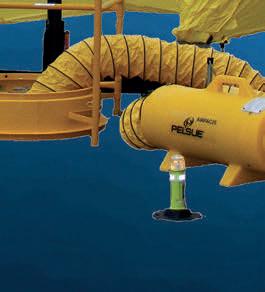
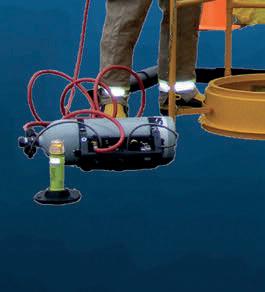
These concentrated colloidal activated carbon-enhanced attenuation remedies replace non-sustainable remedial methods like dig and haul or pump and treat, which create more PFAS waste materials and generate greenhouse gases.



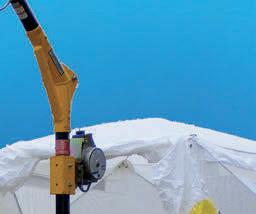














Steve Barnes is with REGENESIS. Email: sbarnes@regenesis.com











 (Left) Once the target depth was reached, the SourceStop horizontal barrier base layer was spray-applied until evenly coating the excavation bottom and sidewall bottom edges. (Centre) A rotary mixing head blends activated carbon amendment with the soil. (Right) Excess amended soils are spread beyond the treatment area to reduce mounding.
(Left) Once the target depth was reached, the SourceStop horizontal barrier base layer was spray-applied until evenly coating the excavation bottom and sidewall bottom edges. (Centre) A rotary mixing head blends activated carbon amendment with the soil. (Right) Excess amended soils are spread beyond the treatment area to reduce mounding.
The Northwest Territories and Nunavut are a vast expanse of land, lying mostly north of the 60th parallel and making up about one third of Canada’s total area. The population of this huge area is approximately 85,000, and the communities of Yellowknife and Iqaluit have 40% of the population.
In both territories, the territorial governments are ultimately responsible for providing water distribution and sewage collection systems to the 58 communities, although, in the Northwest Territories a significant amount of this responsibility has been devolved to the communities, particularly the larger communities.
Of the 58 communities, only 10 have piped water and sewer, and the remainder are served with trucked water and sewer. Water supply and sewage collection systems of many types and materials have been installed over the past 60 years. While not always successful, these systems have provided invaluable experience and have all contributed to the development of the standards utilized today.
Many innovations have been made as part of the development and evolution of standards used today, and one of the most significant innovations has been the freeze protection of the water and sewer systems. Freezing is the inevitable outcome of placing water-filled piping in an environment that is colder than 0°C, and freezing usually leads to substantial damage to the piping. Therefore, it is not a desirable situation.
Classic responses to freeze protection have been to avoid freezing environments or provide freeze protection measures. In avoiding the freezing environment, the most common approach has been to bury the piping deeply enough to ensure that it operates in unfrozen soil, or provide insulation over the pipe to prevent the frost from penetrating to the depth of the pipeline.
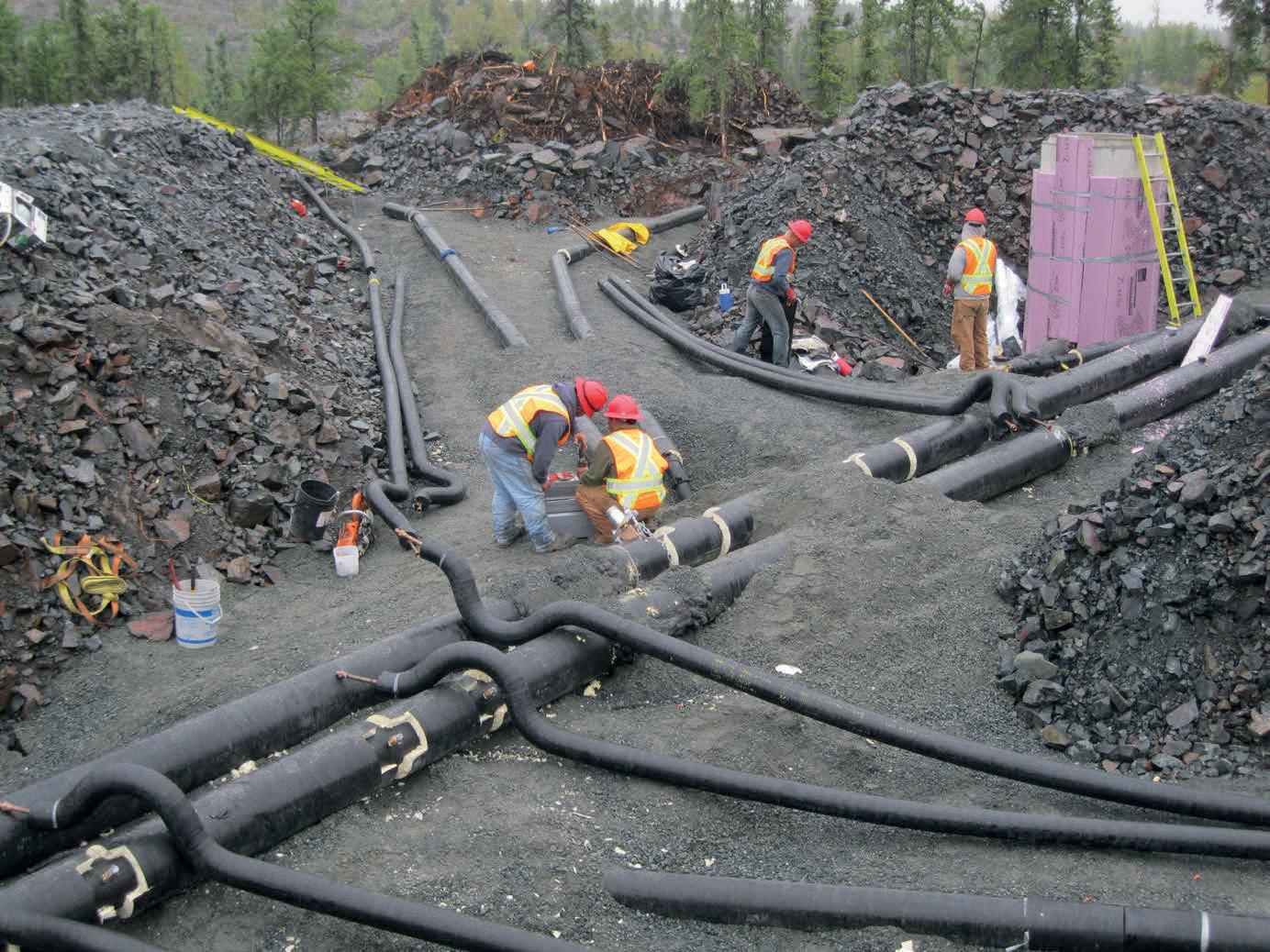
Other common freeze protection measures applied in the Canadian Arctic have been insulation of the pipe itself by applying a factory-installed layer of polyurethane foam to reduce heat loss, and heat tracing with a heating cable adjacent to the pipe to offset the heat loss from the pipe. Pipe insulation reduces the rate of heat loss and delays the time to freeze; however, freezing is still inevitable if you wait long enough.
There are limited opportunities to optimize freeze protection by heat tracing, such as thermostatic control in small portions of the distribution system. However, heat tracing cables are expensive to operate, and have historically been unreliable and subject to failure after a period of time.
The fundamental practice for water systems, developed in southern Canadian environments, has been to design and construct water distribution sytems
as a grid to improve reliability and hydraulic performance. Hydraulic analysis often assumes that there are uniform water demands applied across the entire system. Hydraulic design includes consideration for high water demands for fire flow, plus maximum day demand, or maximum hour demand.
Freeze concerns in this approach arise during low demand periods, and with non-uniform distribution of demand, which may cause a change in direction, or stagnation of flow in the piping.
An innovation to freeze protection emerged with the consideration of the physics of water freezing, which included the principles of heat loss, mass flow, and ambient temperature to estimate a temperature depression for the water. However, the thermal analysis required ground temperature data, which was not easy to find.






Some data was available from records of Canadian climate norms, and more site-specific data was available from areas where agricultural research had taken place. However, it was usually required to assume a value based on experience and make judgements that the ground temperature would be somewhat lower than the climatic mean, but warmer than the surface temperature.
Another element to the analysis was the water temperature in the system itself, which could be obtained from system operating data. With groundwater supplied systems there is a freeze protection bonus because groundwater is usually considerably warmer than surface water that is available during the winter months.
Unfortunately, groundwater supplies are unusual in the Arctic because of permafrost conditions. There is no groundwater in Nunavut, and only one groundwater system in the Northwest Territories.
Surface water supplies can be challenging and may require tempering (heating). The most significant concern is the “temperature depression” which emerges from a calculation of heat loss. The volumetric flow rate is used to calculate mass flow rate, and by applying the specific heat the temperature depression may be determined.
If all things are in order with this calculation, the mass of water leaves the section pipe under analysis with a temperature above 0°C. It is true that water can remain liquid at 0°C, but only the brave designers depend upon latent heat to avoid freezing.
Calculations alone may not be enough to finalize the system and developing a comfortable understanding about the flow patterns in the distribution system may be needed. This understanding includes a determination of the flow patterns during periods of low demand. The energy gradient may be very flat during low demands, leading to challenges in reliably estimating flow directions and volume of flow. The available history of a water system can provide guidance about low demand rates, but if information is not available, assumptions may be necessary about the demands.
It should be noted that flowing water can freeze with the formation of frazil ice, which is “soft” or amorphous ice formed by the accumulation of ice crystals in water that is too turbulent to freeze solid. Basically, the water needs to be moved out of the system before the heat needed for freeze protection is lost, and newer, warmer water must be added to offset the heat loss.
Freeze protection is best applied at a point remote from the supply, which assures that the system sees consumption plus freeze protection demands, and assures some energy gradient across the system.
The action to remove water out of the system before too much heat is lost is accomplished with two approaches. The traditional approach has been to “bleed” water from the water system into the sewer system, which is generally easy to do, but is wasteful and expensive.
The second approach is to use pumps which create a recirculation flow. However, this means that a system cannot have any local closed loops that could simply circulate the water until it uniformly freezes. This design provision often creates single loop, non-gridded water systems that are somewhat complex.
Associated with looped systems are some unique configurations of piping and some unique pieces of hardware. The unique configurations can include three pipe systems, where the third pipe is looping back on itself to overcome a dead-end system. The unique hardware includes the insulated access vault system, where the water and sewer pipe pass through a common access point.
In summary, the development of a freeze protection strategy for a water system in the Canadian Arctic requires a reliable understanding of flow patterns that is independent of demand, a method to predict heat loss and temperature depression, and, sufficient flow that the returning water remains above 0°C.
It is also important to recognize that, despite the best design efforts, things can go wrong. A prudent approach to Arctic water system design is not if the system is going to freeze, but when it is going to freeze.
In this regard, there are pipe materials that resist damage due to freezing, such as high density polyethene piping (HDPE), which is the pipe material of choice for many community applications, particularly in Nunavut.
 Ken Johnson is with EXP. Email: ken.johnson@exp.com. D. Farrell McGovern is an independent consultant.
Ken Johnson is with EXP. Email: ken.johnson@exp.com. D. Farrell McGovern is an independent consultant.


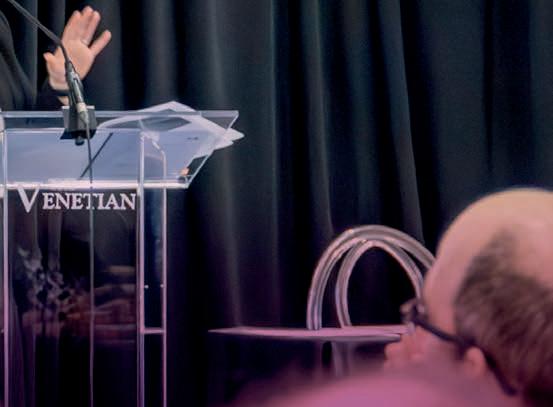
















British Columbia has debuted its new Energy Action Framework, as an attempt to ensure new oil and gas sector projects fit within the province’s climate commitments and drive clean economic growth.
Building on its CleanBC plan, the framework introduces four new rules to address the fact that the oil and gas industry accounts for 50% of industrial emissions and 20% of B.C.’s total emissions. The most significant element of the Energy Action Framework will require all proposed liquefied natural gas (LNG) facilities in the environmental assessment process to pass an emissions test and develop a plan to become net-zero by 2030.

Additionally, B.C. is introducing an emissions cap for the oil and gas sector under the Greenhouse Gas Industrial Reporting and Control Act. The province will set the emissions later this
year, following wide-ranging consultations.



For the sector, responses to the cap may require the adoption of best-in-class technology to reduce emissions as much as possible, and offsetting remaining emissions through high-quality, verified carbon offset projects.
B.C. officials have yet to address whether the new emissions cap will be harmonized with the planned federal emissions cap, or share any details surrounding the cap’s enforcement.



B.C.’s new framework builds on the recent approval of Cedar LNG, a $3.2-billion Haisla Nation-led project partnering with the Pembina Pipeline Corporation. It will be the largest First Nations majority-owned infrastructure project in Canada and play a key role in the Haisla’s economic development over the next four decades. The project is set to produce about 3 million tonnes of LNG per year and be one of the lowest-emitting facilities of its kind in the world, provincial officials said.
Cedar LNG also received its first permit from the BC Energy Regulator for the approximately 8.5-km pipeline that will connect the project into the Coastal GasLink pipeline.


By late spring, the Energy Action Framework calls for the creation of a clean energy and major projects office to fast track investment in clean energy and technology and create good, sustainable jobs in the transition to a greener economy. The office is designed to guide clean energy projects focused on hydrogen, biofuels and renewable natural gas to navigate regulatory processes, access provincial programs, and reach final investment decisions.
Lastly, B.C.’s Energy Action Framework will launch a new BC Hydro task force to ensure the province is advancing clean electricity. The task force will accelerate the planning and procurement of new infrastructure needed to power B.C.’s economy with clean electricity instead of fossil fuels, while keeping rates affordable.
It will also identify and advance Indigenous ownership opportunities in future electricity generation and transmission investments. The task force will include senior officials from the province and BC Hydro, as well as Indigenous representation and independent expertise.
For more information, email: editor@esemag.com










High grit installations demand the right cutters in the Grit Zone. Don’t compromise on grinder performance with a cutter stack you can’t custom configure. JWC Environmental’s Monster Stack™ mixed cutter stacks ensure the right cutter at the right location. Specify Grit Zone compatible cutters where you need them and different cutters higher in the cutter stack to tackle other solids.
Represented by ACG-Envirocan
T: 905-856-1414
E: sales@acg-envirocan.ca
W: www.acg-envirocan.ca
JWC Environmental
T: 800-331-2277
E: jwce@jwce.com
W: jwce.com
Looking to reduce fine screen maintenance? JWC Environmental’s innovative Finescreen Monster® uses a brushless, dual-water spray bar cleaning system instead of a brush to keep panels clear and free flowing. Plus, the easily replaceable UHMW staple guard panels are built to cut debris stapling. Both features reduce maintenance time and downtime for a lower total cost of fine screen ownership.
Represented by ACG-Envirocan
T: 905-856-1414
E: sales@acg-envirocan.ca
W: www.acg-envirocan.ca
JWC Environmental
T: 800-331-2277
E: jwce@jwce.com
W: jwce.com
How do you prevent clogged pumps and downtime with limited pump station space? The Muffin Monster® Manhole comes ready to install upstream of pump stations, tying right into sewer lines and includes a Muffin Monster 30K grinder. It’s the remedy for clogs and costly downtime when there’s not enough room for conventional installation of a sewage grinder to protect pumps.
Represented by ACG-Envirocan
T: 905-856-1414
E: sales@acg-envirocan.ca
W: www.acg-envirocan.ca
JWC Environmental
T: 800-331-2277
E: jwce@jwce.com
W: jwce.com
Asahi/America has recently expanded its Series 19 electric actuation line to include a multiturn unit capable of operating on diaphragm and gate valves up to 4". The new Series 19 MAV MultiPack® actuator, like all Series 19 actuators, comes standard with multi-voltage capability, a visual position indicator, an LED light to indicate valve position or fault, and auxiliary contacts.
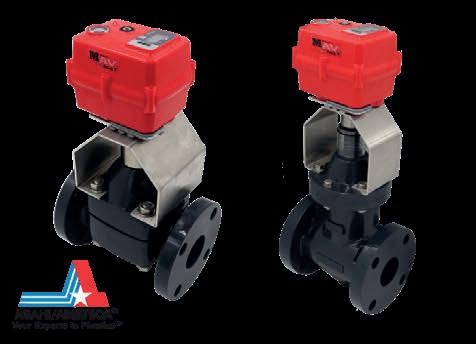
Asahi/America
T: 800-343-3618
F: 800-787-6861
E: asahi@asahi-america.com
W: www.asahi-america.com
Blue-White's Wall Mount Skids arrive fully assembled with top line components and are ready to work for you. Included is the Blue-White Metering Pump(s) of your choice, diaphragm or peristaltic. Skids are board-mounted with handles to facilitate easy install. One or two pump units are available and are offered with four piping options. Plumbing connections are threadless for a leak-free operation.
Blue-White Industries
T: 714-893-8529
F: 714-894-9492
E: info@blue-white.com
W: www.blue-white.com


Standardize with one chemical feed solution using FLEXFLO® M1 Peristaltic Dosing Pump. The M1 will not vapour lock and never loses prime. This self-priming chemical feed pump delivers smooth, consistent, and precise chemical dosing. Feed output range: .0001 – 5.6 GPH (.0004 – 21.2 LPH), pressures to 100 PSI (6.89 Bar). The M1 pump achieves a 10,000:1 turndown ratio and has efficient BLDC motor technology.


Blue-White Industries
T: 714-893-8529
F: 714-894-9492
E: info@blue-white.com
W: www.blue-white.com
Chemline’s new Type 26 true union CPVC ball valves are designed for industrial services. Available ½" to 4", this heavy-duty valve is used in many chemical plants. Actuation is easy using the ISO standard mounting kits. An integral base mounting pad is provided for panel mounting. Valves are certified under NSF/ANSI Standard 61 for contact with drinking water.

Chemline Plastics
T: 800-930-CHEM (2436)
E: request@chemline.com
W: www.chemline.com
Our primary focus centers on high-quality solids handling pumps for various wastewater applications, featuring the Sithe Chopper series, Razor Grinder series, and envie3 Dry Run Submersible Solids Handling and Chopper series.
At WEFTEC 2023, we proudly introduce our E36 envie3 pumps, our most substantial offering to date! This expansion increases the product range to 12" discharge and 125 HP, offering a new sensing package comprising temperature, vibration, and seal failure monitoring for added equipment reassurance.
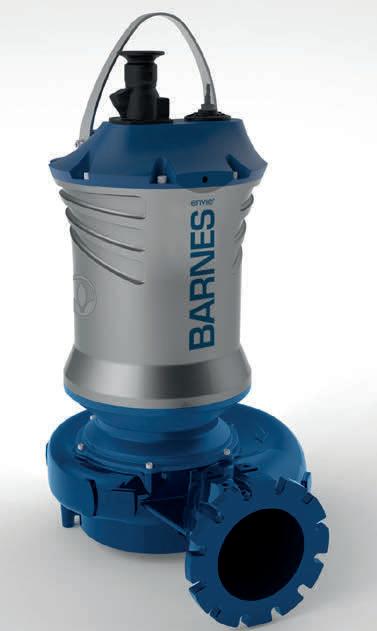
Crane Pumps & Systems
W: www.cranepumps.com
The Chlor-Scale 150™ from Force Flow provides a simple and reliable way to monitor the amount of chlorine or ammonia used, and the amount remaining in the cylinder. The solid PVC scale platform, with a 5-year warranty, provides the strongest defense against the corrosive environments associated with gas feed applications. Electronic and hydraulic options are available.
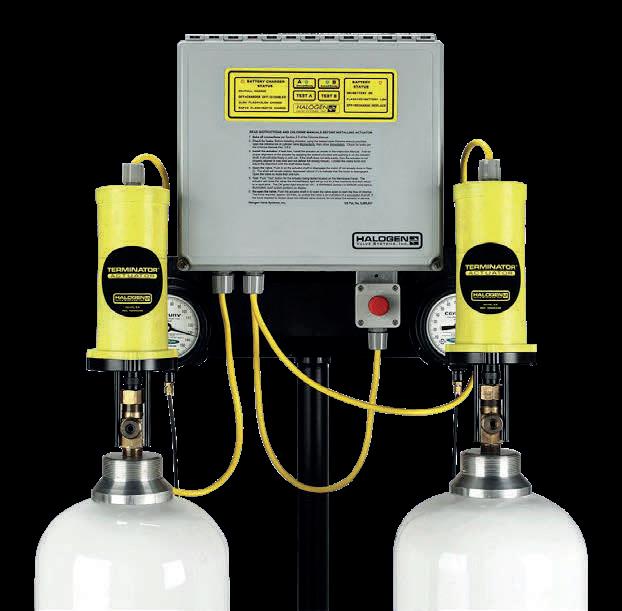

Force Flow
T: 800-893-6723
W: www.forceflowscales.com

Chemline’s new Type 25 true union ball valves are designed for industrial services. Available ½" to 2" in PVC, PP and PVDF with manual locking handles as standard. A full selection of options includes padlockable handles, base mount for panel mounting, all-PVC stem extensions and quick install actuator mounting kits to accommodate our full line of electric and pneumatic actuators.
Chemline Plastics
T: 800-930-CHEM (2436)
E: request@chemline.com
W: www.chemline.com
From simple monitoring and visualization of tanks and silos through to Inventory Monitoring on a global scale, we guarantee complete inventory visibility 24 hours a day, 7 days a week, anywhere in the world. Learn how Endress+Hauser's Micropilot FWR30 & SupplyCare bring efficiency and transparency to stock management across all industries.

Endress+Hauser Canada
T: 800-668-3199
F: 905-681-9444
E: info.ca@endress.com
W: www.ca.endress.com
The Gemini™ Emergency Shutoff System adds a new level of safety to your gas chlorine feed system. Designed specifically for dual 150 lb chlorine cylinder applications, the Gemini System, with its two Terminator™ actuators, stops a chlorine leak within seconds of detection by automatically closing the cylinder valves. The actuators are simply placed on top of the valves and protection begins.
Halogen Valve Systems
T: 949-261-5030
W: www.halogenvalve.com
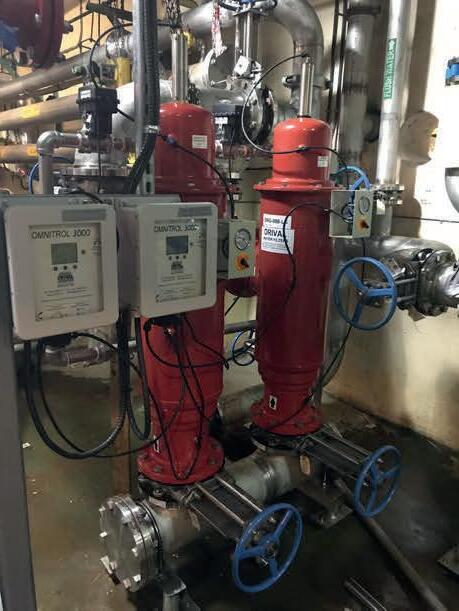
NETZSCH’s maintenance-friendly Full Service-in-Place (FSIP®) NEMO®

The LittaTrap Catch Basin Insert is a low-cost, innovative technology that prevents plastic and trash from reaching our waterways. Designed to be easily retrofitted into new and existing stormwater drains, the LittaTrap is installed inside storm drains and when it rains, catches plastic and trash before it can reach our streams, rivers and oceans.
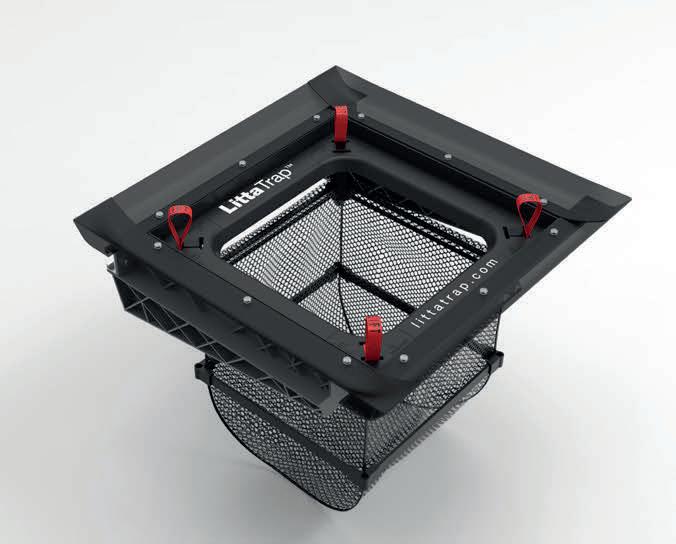
Imbrium Systems
T: 800-565-4801
E: info@imbriumsystems.com
W: www.imbriumsystems.com
The new Stormceptor® EF is an oil grit separator (OGS)/hydrodynamic separator that effectively targets sediment (TSS), free oils, gross pollutants and other pollutants that attach to particles, such as nutrients and metals. The Stormceptor EF has been verified through the ISO 14034 Environmental Management – Environmental Technology Verification (ETV).
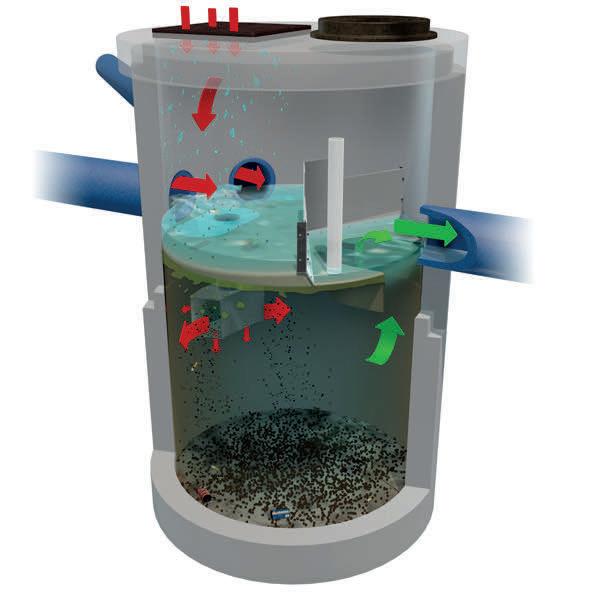
Imbrium Systems
T: 800-565-4801
E: info@imbriumsystems.com
W: www.imbriumsystems.com
progressive cavity pump has a large inspection cover. Open the pump cavity on-site, dismantle all rotating parts and replace them without removing the pump from the pipe assembly. Capacities and pressures are equal to the same size classic NEMO progressing cavity pump – known for continuous, pressure-stable, gentle and low-pulsation conveyance of almost any substance.
NETZSCH Canada
T: 705-797-8426
F: 705-797-8427
E: ntc@netzsch.com
W: www.netzsch.com

Vanton’s vertical thermoplastic sump pumps are engineered for the dependable handling of corrosive, abrasive, and ultra-pure process fluids, plant effluents and wastewater, over broad temperature and pH ranges. Available in polypropylene, PVC, CPVC, or PVDF, these rugged pumps are widely used across various manufacturing industries and water treatment facilities. Every Vanton pump is performance tested to the specified service condition intended.
Vanton Pump & Equipment Corporation
T: 908-688-4216
F: 908-686-9314
E: mkt@vanton.com
W: www.vanton.com
Whether organic or inorganic particles are your problem, ORIVAL Water Filters will protect your process, equipment or outfall from damage or inefficiencies due to suspended solids. ORIVAL filters are a good choice for on-site or discharge applications at municipal and industrial treatment facilities and have been selected time after time for water reuse projects. Orival, Inc. provides a complete line of automatic self-cleaning water filters for all flow rates.
Orival
T: 201-568-3311
E: filter@orival.com
W: www.orival.com

Vanton cantilevered vertical thermoplastic SGK pumps are engineered for the dependable handling of corrosive process fluids, plant effluents and wastewater, over broad pH ranges. Available in polypropylene, PVC, CPVC or PVDF, these rugged pumps are widely used across various manufacturing industries and water treatment facilities. Every Vanton pump is performance tested to the specified service condition intended.
Vanton Pump & Equipment Corporation
T: 908-688-4216
F: 908-686-9314
E: mkt@vanton.com
W: www.vanton.com
 By ES&E Staff
By ES&E Staff

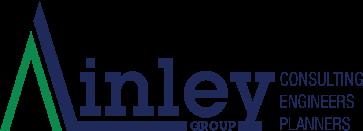

Arecent survey suggests that operational costs for wastewater utilities could increase by more than 60%, as a direct result of new PFAS regulations in the U.S.







The National Association of Clean Water Agencies (NACWA), which led the survey, says that U.S. wastewater utilities and their customers will be responsible for tens of billions of dollars in additional costs to address the treatment of per– and polyfluoroalkyl substances, better known as PFAS.


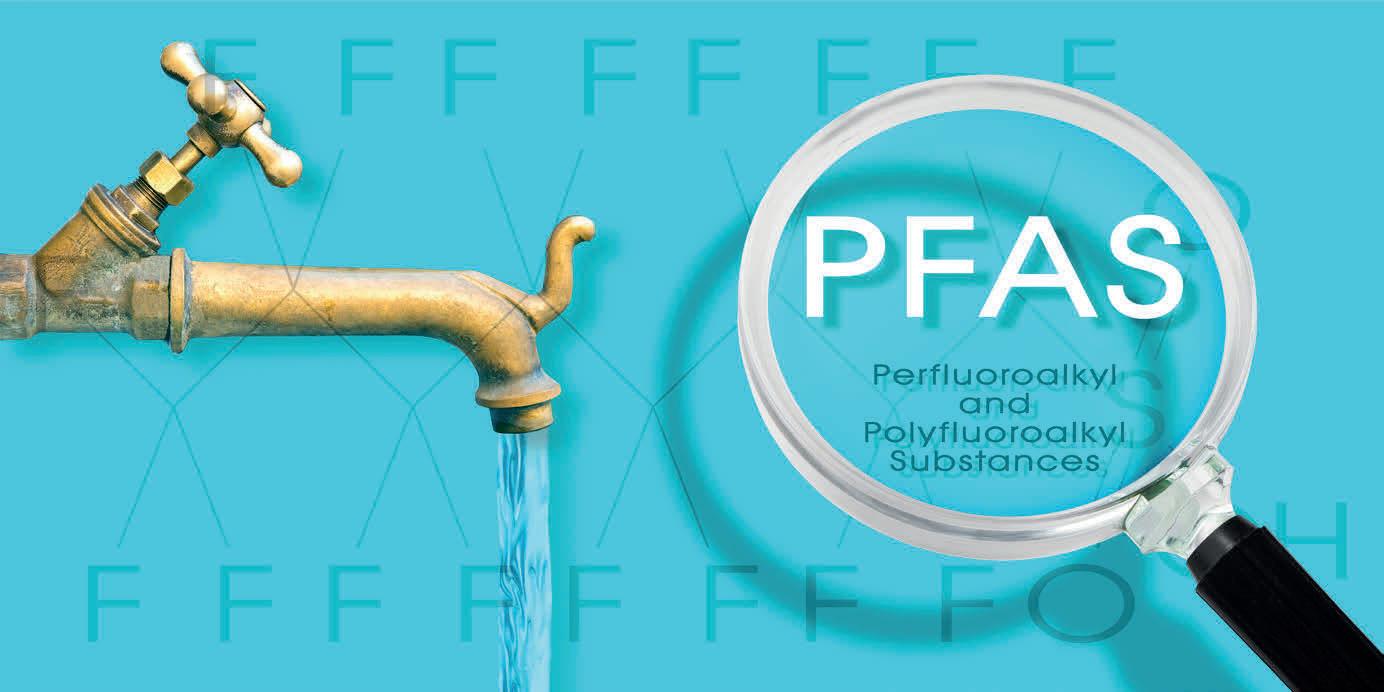
The U.S. Environmental Protection Agency (EPA) has proposed that perfluorooctanoic acid (PFOA) and perfluorooctane sulfonic acid (PFOS) should have near-zero legally enforceable Maximum Contamination Levels (MCL) of 4 parts per trillion (ppt) each, or nanograms per litre, the lowest concentration most laboratories can reliably detect.


Various technologies can be employed for PFAS remediation, and the complexity and scale of the selected treatment will significantly influence the overall costs. Treatments range from advanced oxidation processes that involve the use of chemical reactions to break down and destroy PFAS compounds, to electrochemical methods, or membrane-based separation processes such as reverse osmosis and nanofiltration.
“Clean water utilities neither created nor profited from PFAS chemicals,” announced Nathan Gardner-Andrews, NACWA chief advocacy and policy officer, in a statement. “But under the current EPA regulatory approach, these utilities and their ratepayers will be stuck with the clean-up costs instead of the private companies that have made billions off these chemicals.”
The NACWA survey was released in conjunction with a new report called “Correcting PFAS Myths”, organized by The Water Coalition Against PFAS. The coalition is comprised of five of the nation’s leading water sector associations,
Various technologies can be employed for PFAS remediation, and the complexity and scale of the selected treatment will significantly influence the overall costs. Credit: Francesco Scatena, stock.adobe.comincluding the Association of Metropolitan Water Agencies (AMWA), the American Water Works Association (AWWA), the National Association of Clean Water Agencies (NACWA), the National Rural Water Association (NRWA) and the Water Environment Federation (WEF).

The report tackles the developing and

complex regulatory landscape around PFAS treatment, as well as some of the legal liability for PFAS cleanups. It also references the new report by the Minnesota Pollution Control Agency (MPCA), which estimates that technologies and expenses needed to remove PFAS from certain wastewater streams across Minnesota would cost between $14 – $28 billion over 20 years.
Another point raised by the MPCA report is its projection that small wastewater treatment facilities could face per kilogram costs over six times greater than large facilities due to economies of scale. Without an alternative source of funding, PFAS removal and destruction from municipal wastewater will be unaffordable for the foreseeable future, suggests the MPCA report.
“The exorbitant costs associated with removing PFAS from community wastewater systems underscores the need to address PFAS pollution long before it gets into the waste stream,” said MPCA Commissioner Katrina Kessler in the
report. “At no fault of their own, wastewater treatment facilities receive PFAS from a variety of sources and they cannot carry the burden of cleaning up the pollution. We must all focus on preventing PFAS from entering the environment in the first place.”

One of the other reports that has garnered attention on municipal PFAS cleanup costs was commissioned by the AWWA and prepared by Black & Veatch. It projects that drinking water utilities will need to invest more than $50 billion to install and operate treatment technologies over the next 20 years.
To meet the EPA’s newly proposed standards, the AWWA said that more than an estimated 5,000 water systems will have to develop new water sources or install and operate advanced treatment, while another 2,500 water systems in states with existing standards will need to adjust existing PFAS treatment systems.
For more information, email: editor@esemag.com
Laval, Quebec’s third largest city, has released a new climate plan that proposes nearly 400 municipal actions to reduce greenhouse gases (GHGs). These range from increasing tree canopy cover to expanding cycling networks and transitioning some 300 city-owned buildings away from fossil fuels towards clean energy.
Climate Plan Horizon 2035 also includes nine directives and 60 measures that can be carried out by 2025 for the city of nearly 500,000 residents. The initiatives touch on transportation, water use, and implementing green infrastructure that can contribute to an anticipated reduction of 10,550 tonnes of greenhouse gases. Overall, Laval has pledged to reduce GHG emissions by 33% below their 1990 level by 2035.
“Barely a few years ago, our environmental decisions were carried out at arm’s length by our environment department,” announced Laval Mayor Stéphane Boyer, in a statement trans-
lated from French. “The preparation of this new plan, however, demonstrates how much those times are over. The fight against the environmental crisis is now everyone’s business,” he added.
Laval’s climate document is made up of two major plans: the Greenhouse Gas Emissions Reduction Plan and the Climate Change Adaptation Plan. The actions planned between now and 2025 under these plans represent an investment totaling $276 million. The GHG emissions reductions plan totals $181 million, while the city’s proposed climate change adaptation investments total $95 million.
The plans, developed with input from 14 organizations, are designed to offset the projected financial impacts of climate change. According to a study carried out on behalf of the Union of Quebec Municipalities in 2022, municipalities in Quebec will have to spend approximately $2 billion more per year until 2055, due to the chronic risks generated by climate change, such as extreme precipitation, temperature increases, and
changing frost cycles.
The climate plan leans heavily on climate projections and established science on climate change to bolster Laval’s case for action. The report details data on urban heat islands, as well as data within climate agreements. The plan calls for others to “draw inspiration” from it and step up their own fight against climate change.
The plan recommends nine solutions to specific climate issues, such as protecting biodiversity through the use of green infrastructure, and encouraging the transition to green energy. The built environment of offices, buildings, houses and institutions accounts for about 22% of Laval’s GHG emissions.

Laval officials will also aim to increase waste recovery rates. In 2019, Laval had a 56% recovery rate for recycling and 49% for organics. Other measures include potentially developing a shoreline restoration program and developing greater resilience against flooding. Electrifying its municipal fleet will also be a priority for Laval as the transportation sector is responsible for 69% of the city’s GHG emissions.
More than 14,500 residential buildings still heat with oil in Laval. It is estimated that a dwelling heated with an oil system uses on average between 1,000 and 2,500 litres per year. This generates between three and seven tonnes of GHGs, or the equivalent of the annual emissions of one or two cars. Laval will expand its subsidy program for the replacement of oil-fired heating systems and target the retirement of at least 7,500 systems.
In terms of water, Laval has joined a new program of excellence for water resource recovery stations, which consists of a structured approach aimed at achieving a high level of excellence in the operation of wastewater treatment plants.
The City of Laval has registered its three stations: Fabreville, Auteuil and La Pinière, in the hope of reducing the environmental impact of these three stations, using a global methodology for managing GHG emissions for water management, as well as the carbon-neutral recovery of municipal sludge, including the replacement of the sludge dryer and evaluation of the treatment process.
For more information, email: editor@esemag.com
Pictured: The suburbs of Laval. More than 14,500 residential buildings in this city still heat with oil. Credit: Overflightstock, stock.adobe.com




































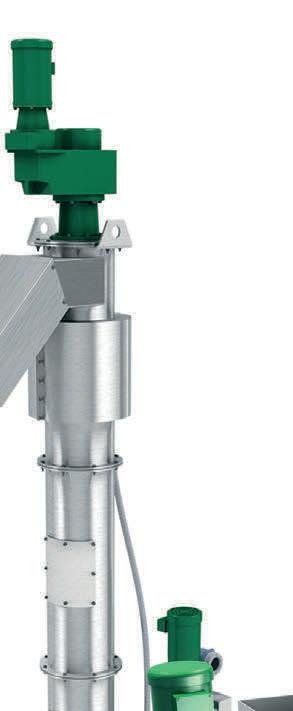

































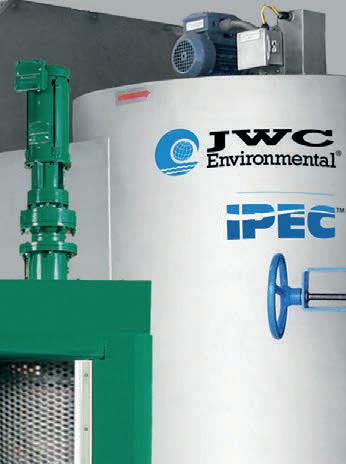









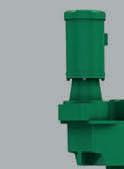


























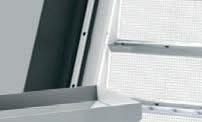






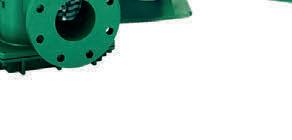







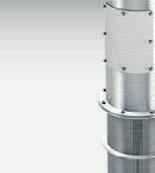













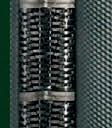








































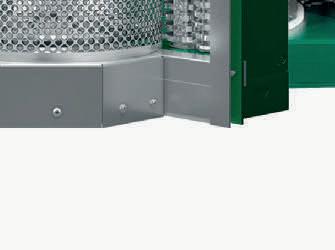
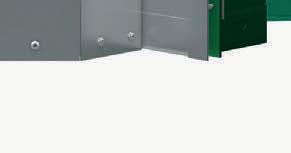








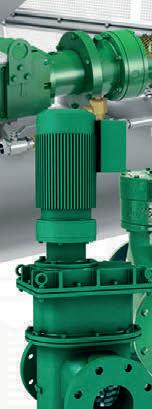


• 100% removal of floatables and neutrally buoyant material debris 4.7mm or larger.
• Self-cleaning screen reduces maintenance costs.
• Internal bypass eliminates the cost associated with additional bypass structures.
• Multiple pipe inlets and 90-180º angles provides design flexibility.
